
La pandémie et la politique de la survie: les horizons d’un nouveau type de dictature
Alexandre Douguine
La rupture de l’ordre libéral global et de ses fondations
Ce qui se produit en ce moment est une rupture globale de l’ordre mondial. C’est absolument sans importance de savoir si la nature du coronavirus est artificielle ou pas, et ce n’est même pas d’une importance primordiale de savoir, dans le cas où il serait artificiel, s’il a été délibérément répandu par le « gouvernement mondial » ou pas. L’épidémie a commencé – c’est un fait. Maintenant la chose la plus importante est de voir comment le « gouvernement mondial » a réagi à cette épidémie.
Pour clarifier, le « gouvernement mondial » est la totalité des élites politiques et économiques et les intellectuels et les médias (les « médiacrates ») qui les servent. Un tel « gouvernement mondial » existe nécessairement, parce qu’à une échelle globale il y a des normes fondamentales strictement définies qui déterminent les paramètres basiques de la politique, de l’économie et de l’idéologie.
- En économie, la seule norme reconnue est le capitalisme, l’économie de marché (qui est contestée seulement par la Corée du Nord – pas, et c’est très important, par la Chine, qui présente sa propre version de capitalisme d’Etat national sous la direction du Parti communiste).
- En politique, la seule norme reconnue est la démocratie libérale parlementaire, basée sur la société civile comme sujet et source de la légalité et de la légitimité (à part la Corée du Nord, presque tout le monde est d’accord avec cela, bien que la Chine interprète la « société civile » dans une optique socialiste et partiellement nationale-culturelle spéciale et pratique un contrôle médiacratique par des moyens autres que des élections parlementaires directes ; et certains Etats islamiques – par exemple, l’Iran et les monarchies du Golfe – ont un certain nombre de traits particuliers).
- Dans le domaine idéologique, tout le monde accepte l’arrangement selon lequel tout individu a un certain nombre de droits inaliénables (à la vie, à la liberté de conscience, à la liberté de mouvement, etc.) que tous les Etats et sociétés sont obligés de garantir.
Dans l’essence, ce sont les trois principes de base du monde global qui a émergé après l’effondrement de l’URSS et la victoire de l’Occident capitaliste dans la Guerre Froide. Les principaux acteurs de la politique, de l’économie et de l’idéologie sont concentrés dans les pays occidentaux, qui servent de modèle aux autres. C’est le cœur du « gouvernement mondial ». A l’intérieur de ce gouvernement, la Chine commence à jouer un rôle de plus en plus important, et les élites de la Russie et de tous les autres Etats se précipitent dans cette direction.
Que le coronavirus soit artificiel ou pas n’est pas si important
Il est sans importance de savoir si le coronavirus a été produit artificiellement et utilisé délibérément par le « gouvernement mondial » dans ce sens.
Mais c’est ce monde, sous le parapluie de ce « gouvernement mondial » avec ses trois fondements axiomatiques, qui est en train de s’effondrer devant nos yeux. Cela rappelle la fin du camp socialiste, du monde bipolaire et de l’URSS, mais alors l’un des deux mondes disparut, alors que l’autre demeura et étendit ses règles à tous les autres incluant ses adversaires d’hier. Gorbatchev lui-même voulait entrer dans le « gouvernement mondial » sans dissoudre l’URSS, mais il ne fut pas accepté. Les dirigeants pro-occidentaux de la Fédération Russe qui se soumirent à l’Occident ne furent pas acceptés non plus. Ils ne le sont toujours pas. Et maintenant, aujourd’hui, ce même « gouvernement mondial » est en train de s’effondrer. Pourrait-il avoir opté volontairement pour la liquidation ? Difficilement. Mais il a réagi au coronavirus comme à quelque chose d’inévitable, et ce fut un choix.
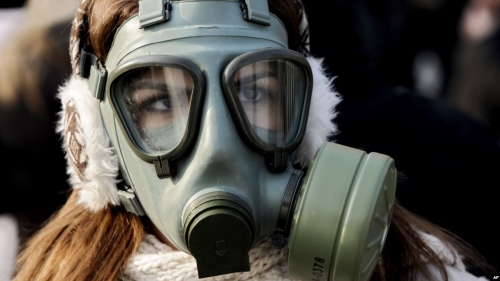
Il y avait la liberté de reconnaître ou pas l’existence du coronavirus. Et par le fait même de sa reconnaissance de la pandémie, le « gouvernement mondial » a signé sa propre sentence de mort. L’a-t-il fait consciemment ? Pas plus (ou pas moins) consciemment que Gorbatchev durant la perestroïka. Dans le cas de l’URSS, un pôle disparut, alors que l’autre demeura. Aujourd’hui la fin de la démocratie libérale planétaire signifie la fin de tout. Ce système n’a pas d’autre paradigme – excepté pour la Corée du Nord (qui est un pur anachronisme, bien que très intéressant) ou la version de compromis de la Chine.
Qui aurait dû vaincre le coronavirus, et comment ?
Le coronavirus a déjà frappé un coup dont ni la politique, ni l’économie, ni l’idéologie ne se remettront. La pandémie aurait dû être combattue par les institutions existantes d’une manière normale, sans changer les règles de base :
- ni en politique (signifiant pas de quarantaine, pas de confinement forcé, et encore moins un état d’urgence) ;
- ni dans l’économie (pas de télétravail, pas d’arrêt de la production, des échanges et des institutions financières-industrielles ou des plateformes commerciales, pas de pause, etc.);
- ni dans l’idéologie (pas de restrictions, même temporaires, des droits civiques fondamentaux, de la liberté de mouvement, l’annulation ou le report des élections, des référendums, etc.).
...mais tout cela a déjà eu lieu à une échelle globale, y compris dans les pays occidentaux, c’est-à-dire dans le territoire du « gouvernement mondial » lui-même. Les fondements mêmes du système global ont été suspendus.
C’est ainsi que nous voyons la situation en cours. Pour que le « gouvernement mondial » prenne de telles mesures, il faut qu’il y ait été obligé. Par qui ? Après tout, il ne peut simplement pas y avoir d’instance d’autorité supérieure à l’humanité matérialiste, athée et rationaliste moderne...
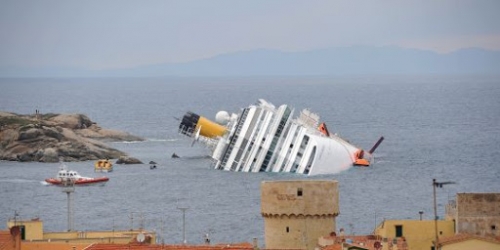
Le libéralisme comme résultat final du Nouveau Temps
Gardons cette question pour plus tard et regardons maintenant la plus grande trajectoire historique du système global libéral-démocratique, c’est-à-dire le gouvernement des « élites politiques libérales » (parlementarisme), les principaux acteurs économiques (oligarques et monopoles transnationaux), les idéologues de la « société ouverte » et les journalistes qui les servent (incluant les modérateurs des sentiments sur les réseaux sociaux et l’Internet). La source de ce système doit être recherchée à la fin de la Renaissance et dans le « Nouveau Temps » (les débuts de la Modernité) qui en sortit, et qui vit une rupture fondamentale avec le Moyen-Age concernant le sujet du pouvoir et, par conséquent, concernant sa nature même. Au Moyen-Age et dans la société de la Tradition en général, la légitimité et la légalité du modèle politique de la société étaient basées sur le facteur transcendant – supra-humain, divin. Le sujet suprême du pouvoir et de la loi était Dieu. Ses révélations et les lois et les cadres établis par Lui, ainsi que les institutions qui étaient considérées comme ses représentantes sur Terre : dans le monde chrétien, c’était l’Eglise et l’Etat monarchique. Le Nouveau Temps de la Modernité abolit cette verticale et se donna le but de bâtir une société sur des fondements terrestres. Ainsi le principal sujet et la principale source de la légitimité et de la légalité devinrent l’homme, et le « gouvernement céleste » – le « gouvernement supramondain » – fit place au « gouvernement terrestre ». La politique, l’économie et l’idéologie changèrent en conséquence : la démocratie, le capitalisme et la société civile émergèrent.
Pendant plusieurs siècles, ces principes combattirent le vieil ordre (médiéval) jusqu’à ce que les derniers empires – le russe, l’ottoman, l’autrichien et l’allemand – tombent au XXe siècle. Cependant, la démocratie libérale dut encore se confronter à des versions hérétiques (du point de vue libéral) de la Modernité, comme le communisme et le fascisme, qui interprétèrent à leur propre manière la « société civile » et l’être humain : le premier selon l’optique de la classe et le second en termes nationaux ou raciaux. En 1945, les communistes et les libéraux mirent conjointement fin au fascisme, et en 1991 le communisme tomba. Les libéraux furent les seuls à rester, et dès lors le « gouvernement mondial » passa du domaine du plan à celui d’une quasi-réalité, puisque tous les pays et sociétés ont reconnu les standards de la démocratie, du marché, et des droits de l’homme. C’est ce que Francis Fukuyama voulut dire dans son livre La fin de l’Histoire et le Dernier Homme. L’histoire de ce Nouveau Temps commença quand le but fut établi de remplacer le sujet céleste par le sujet terrestre, et elle se termina quand ce remplacement fut accompli à une échelle mondiale.
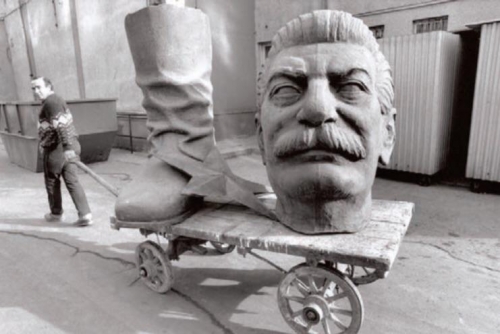
La fin du monde libéral et ses parallèles avec la fin de l’URSS
Aujourd’hui, à la place de la fin de l’histoire, c’est-à-dire au lieu du triomphe total de la démocratie libérale, du capitalisme mondial et de l’idéologie de la « société ouverte » (les droits de l’humain en tant qu’individu), nous sommes tombés dans des conditions complètement nouvelles du jour au lendemain. C’est aussi inattendu que la fin de l’URSS. Même après 1991, beaucoup de gens ne pouvaient pas croire que le système soviétique avait disparu, et certains ne peuvent même pas le comprendre aujourd’hui. Bien sûr, la fin du globalisme fut perçue par quelques penseurs critiques : elle fut envisagée par des conservateurs, et la montée rapide de la Chine, qui représente un modèle particulier de globalisme, le refus de Poutine de laisser le pouvoir au manipulable et contrôlable (comme le pensait l’Occident) Medvedev en 2012, et peut-être le plus important, le Brexit et la montée du populisme, purent tous être considérés comme des signes clairs qu’en dépit de sa proximité du point final, le globalisme avait non seulement été incapable d’accomplir effectivement la « fin de l’histoire », mais qu’il commençait paradoxalement à s’en éloigner. A un niveau philosophique, les postmodernistes commencèrent à réfléchir là-dessus, proclamant bruyamment que quelque chose n’allait pas dans la Modernité.
Mais il ne reste pas d’autre voie à l’histoire : elle doit soit avancer avec l’inertie qu’elle a accumulée au cours des derniers siècles, depuis le Nouveau Temps et les Lumières, soit s’effondrer. Tout le monde croyait que d’une façon ou d’une autre tout se résoudrait tout seul, et que la seule chose qui comptait était de combattre efficacement ceux qui étaient catalogués comme les « ennemis de la société ouverte », c’est-à-dire Poutine, l’Iran, le fondamentalisme islamique, ou la nouvelle montée de mouvements nationalistes répondant rapidement à la crise de la migration de masse. En général, pas une seule réflexion sur une alternative, rejetant même consciemment ce genre d’idées. Et c’est pourquoi, au moment d’une crise grave, le système libéral global a échoué et s’est effondré. Presque personne n’a encore compris cela, mais c’est déjà arrivé. Et c’est arrivé irrévocablement. Le coronavirus, par son existence même et spécialement par la manière dont le « gouvernement mondial » lui a répondu, est devenu la fin du monde moderne.
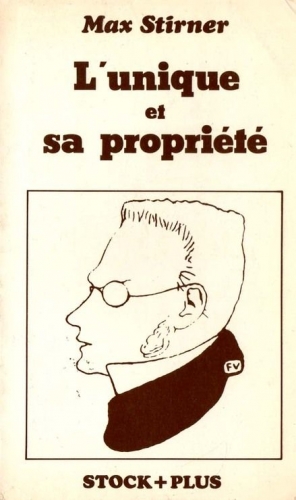 La fin de « l’Unique et sa propriété »
La fin de « l’Unique et sa propriété »
Cela signifie-t-il que l’humanité va mourir ? On ne le sait pas encore, mais cela ne peut pas être écarté. On peut seulement conjecturer si elle va périr ou pas. Mais ce qu’on peut déjà dire avec certitude, c’est que l’ordre mondial global basé sur le capitalisme, la démocratie libérale et les principes de l’individu souverain (la société civile, la société ouverte) a déjà péri. Il a disparu, il s’est effondré, bien que des efforts désespérés seront encore entrepris pour le sauver pendant un certain temps. Comment ils seront déployés et combien de temps ils dureront n’est pas crucial pour l’instant. On ne peut pas écarter qu’il disparaîtra peut-être complètement comme de la fumée, exactement comme le système soviétique s’est dissout totalement.
Ce qui existait il y a juste une seconde était éphémère, comme si cela n’avait jamais existé. Il est beaucoup plus important de regarder ce qui va venir remplacer l’ancien ordre mondial.
La chose la plus importante à comprendre est que ce n’est pas simplement un échec technique dans le système de gouvernance globale qui s’est produit, mais plutôt l’élément final résultant de tout le processus historique de la Modernité, du Nouveau Temps, au cours duquel le pouvoir fut transféré du sujet céleste au sujet terrestre, et ce sujet lui-même – à travers les batailles idéologiques et politiques des derniers siècles, incluant les guerres mondiales chaudes et froides – s’est déplacé vers une certaine cristallisation, celle de la démocratie parlementaire, du marché capitaliste global et de l’individu doté de droits. Tout le système du capitalisme global moderne est bâti sur la prémisse de « l’Unique [= l’Ego] et sa propriété » (Max Stirner). Les droits politiques de l’« Ego » (l’individu complètement isolé de la nation, de la race, de la religion, du sexe, etc.) furent fixés et implantés dans les systèmes mondiaux de la démocratie politique. Les droits économiques furent incarnés dans les normes de la propriété privée et des mécanismes du marché. Ainsi, la source du pouvoir politique atteignit sa limite imminente : dans le libéralisme et le globalisme, les dernières traces de verticalité et de « transcendance » qui avaient encore été préservées durant les premiers stades de la Modernité, en particulier les structures de l’Etat, furent éliminées. D’où l’aspiration globaliste à abolir la souveraineté de l’Etat et à transférer ses pouvoirs au niveau supranational, légalisant ainsi le « gouvernement mondial », qui existe déjà de facto. En d’autres mots, l’histoire politique, économique et idéologique du Nouveau Temps avançait vers une fin très précise, dans laquelle le sujet individuel purement humain, immanent, serait finalement formé et pris comme base de la légitimation politique. Peu de choses furent laissées au hasard : l’abolition complète des Etats qui eut lieu au niveau de l’Union Européenne devait se répéter à l’échelle mondiale.
Le final annulé du libéralisme
Ce moment final, vers lequel tout se dirigeait, aujourd’hui n’est pas seulement retardé indéfiniment, mais est complètement annulé. Si l’histoire politique n’a pas pu atteindre ce point sans le coronavirus, tout le processus s’est effondré devant cette épidémie. Pour combattre efficacement l’épidémie, les autorités de presque tous les pays, incluant ceux de l’Occident, ont introduit une quarantaine obligatoire avec des sanctions strictes en cas de violation, ou ont carrément déclaré des situations d’urgence. Les mécanismes économiques du marché global se sont effondrés du fait de la fermeture des frontières, de même que les bourses des valeurs et les institutions financières.
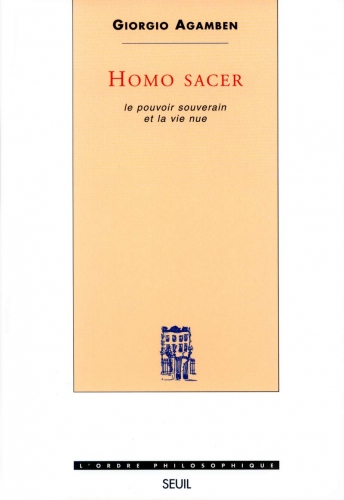 La société ouverte et la migration sans limite sont entrées en contradiction directe avec les standards sanitaires de base. En fait, un régime dictatorial a été rapidement établi dans le monde entier, sous lequel le pouvoir a été transféré à une entité complètement nouvelle. Ni « l’Ego » ni sa « propriété », ni toutes les superstructures géantes du monde qui garantissaient leurs droits et leurs statuts légaux et légitimes ne sont plus considérés comme la source du pouvoir politique. Ce que Giorgio Agamben a nommé la « vie nue », c’est-à-dire l’impératif de survie physique absolument spécial qui n’a rien à voir avec la logique du capitalisme libéral, est passé au premier plan. Ni l’égalité, les droits, la loi, la propriété privée, les décisions collectives, le système des obligations mutuelles, ni aucun autre principe fondamental de la démocratie libérale n’a de pouvoir réel. Seuls ces mécanismes qui contribuent à la survie, pour stopper l’infection et pourvoir aux besoins purement physiologiques les plus simples, sont importants maintenant.
La société ouverte et la migration sans limite sont entrées en contradiction directe avec les standards sanitaires de base. En fait, un régime dictatorial a été rapidement établi dans le monde entier, sous lequel le pouvoir a été transféré à une entité complètement nouvelle. Ni « l’Ego » ni sa « propriété », ni toutes les superstructures géantes du monde qui garantissaient leurs droits et leurs statuts légaux et légitimes ne sont plus considérés comme la source du pouvoir politique. Ce que Giorgio Agamben a nommé la « vie nue », c’est-à-dire l’impératif de survie physique absolument spécial qui n’a rien à voir avec la logique du capitalisme libéral, est passé au premier plan. Ni l’égalité, les droits, la loi, la propriété privée, les décisions collectives, le système des obligations mutuelles, ni aucun autre principe fondamental de la démocratie libérale n’a de pouvoir réel. Seuls ces mécanismes qui contribuent à la survie, pour stopper l’infection et pourvoir aux besoins purement physiologiques les plus simples, sont importants maintenant.
Mais cela signifie que le sujet du pouvoir est en train de changer radicalement. Ce n’est plus la société libre, ni le marché, ni les présomptions humanistes de l’individu souverain, ni les garanties de liberté personnelle et de vie privée. Tout cela doit être sacrifié si la question immédiate est la survie physique. Les droits politiques sont abolis, les obligations politiques sont abolies, la surveillance totale et le contrôle disciplinaire strict deviennent la seule norme sociale prévalante.
Si le « gouvernement mondial » est entré dans un état d’urgence, s’est avéré incapable de l’éviter ou n’a même pas osé l’éviter, ou a simplement été forcé de l’accepter, cela signifie que le paradigme qui hier encore semblait inébranlable a été abandonné. Et dans ce cas, soit il n’y a plus du tout de « gouvernement mondial », et chaque société s’en sort comme elle peut, soit le paradigme fondamental change brutalement et se transforme en quelque chose d’autre. Dans les deux cas, l’ordre ancien s’est effondré, et quelque chose de nouveau est en train d’être bâti devant nos yeux.
Des conclusions aussi radicales ne sont pas seulement liées à l’ampleur de la pandémie, qui n’est pas encore si grave pour l’instant. Beaucoup plus importante est la perception de l’épidémie par les élites de pouvoir, qui ont si rapidement et si facilement abandonné leurs fondements apparemment inviolables. C’est la chose la plus fondamentale. Les mesures visant à combattre le coronavirus ont déjà sapé les fondements de la démocratie libérale et du capitalisme, abolissant rapidement le sujet du pouvoir lui-même. A partir de maintenant, « l’ego et sa propriété » n’est plus la base de la légalité et de la légitimité : dans les conditions de l’Etat d’Urgence, le pouvoir est en train d’être transféré à une autre autorité. Quelque chose de nouveau est en train de devenir le porteur de la souveraineté.
De quoi s’agit-il donc ?
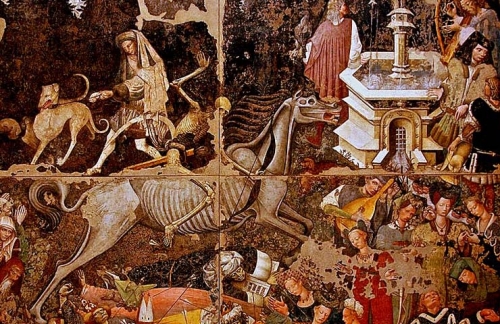
Le coronavirus comme sujet régnant : les dieux séculaires de la peste
D’une part, on pourrait dire que le coronavirus lui-même (ce n’est pas pour rien que le virus porte un nom « royal ») est en train de démontrer un statut unique à celui du sujet. Pour mieux comprendre cela, nous pouvons nous souvenir des antiques dieux de la peste, qui étaient considérés comme des déités formidables dans les croyances religieuses des peuples du Moyen-Orient. Les peuples de la Mésopotamie avaient Erra, Nergal, et d’autres, et dans les traditions monothéistes, en particulier dans le judaïsme, les pestes étaient envoyées par la déité suprême, Yahvé, pour punir les Juifs de leur idolâtrie. Au Moyen-Age, les épidémies et les pestes étaient considérées comme des signes de punition divine. La société traditionnelle peut légitimement donner le statut de subjectivité à des phénomènes de grande ampleur ou les lier à l’élément divin. Cependant, dans le Nouveau Temps de la Modernité, l’homme se considérait lui-même comme le maître complet de la vie, d’où le développement de la médecine moderne, des médicaments, des vaccins, etc. Par conséquent, c’est comme si l’incapacité complète des gouvernements à combattre le coronavirus aujourd’hui jetait l’humanité en-dehors du Nouveau Temps. Mais le Dieu ou les dieux à qui la peste virale moderne pourrait être attribuée et laissée n’existent plus. Le monde moderne est convaincu que le virus doit avoir une origine terrestre, matérielle et immanente. Mais quel genre de matérialité est plus fort que l’homme ? C’est ainsi que surgissent de nombreuses théories de la conspiration reliant l’origine du virus à des malfaiteurs aspirant à établir leur contrôle sur l’humanité. Pour les philosophes du « réalisme spéculatif », qui pendant des décennies ont réfléchi à la nécessité de remplacer l’humanité par un système d’objets – que ce soit l’Intelligence Artificielle ou des cyborgs –, le virus lui-même pourrait très bien se voir attribuer le statut d’acteur souverain, une sorte d’hyperobjet (à la Morton) capable de soumettre les masses à sa volonté, comme le font le moule, le rhizome, etc. En d’autres mots, l’effondrement du modèle libéral porte au premier plan l’hypothèse de l’acteur post-humain et post-humaniste.
Le coronavirus, dont le nom latin signifie littéralement « poison couronné », est donc (du moins théoriquement) un candidat pour le centre du nouveau système mondial. Si la principale préoccupation de l’humanité à partir d’aujourd’hui sera de stopper le virus, de le combattre, de se protéger de lui, etc., alors tout le système de valeurs, de règles et de garanties sera reconstruit selon des principes et des priorités absolument nouveaux. Les réalistes spéculatifs vont même plus loin et sont prêts à reconnaître dans l’hyperobjet la présence d’entités infernales des antiques dieux du chaos sortant du fond de l’être, mais il n’est pas nécessaire d’aller aussi loin, dans la mesure où, si nous pouvons simplement supposer que la rationalité politique, économique et idéologique sera à partir de maintenant construite autour du combat contre des virus contagieux, nous vivrons alors dans un monde différent – par exemple, dans un monde hygiénocentrique –, organisé d’une manière complètement différente de celle du monde moderne. L’« Ego », « sa propriété » et toutes les structures qui leur garantissent la prédictibilité, la stabilité et la protection, qui les élèvent au statut de fondements de la légalité et de la légitimité, passeront à l’arrière-plan, pendant que le coronavirus ou son analogue établira une hiérarchie différente, une ontologie politique et économique différente, une idéologie différente.
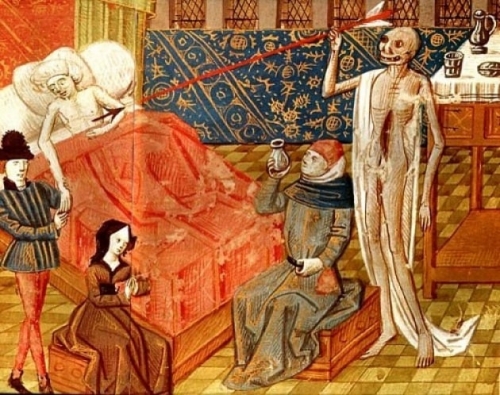
L’Etat contre le coronavirus. Mais quel Etat ?
Si nous regardons la manière dont le combat contre le coronavirus se déroule aujourd’hui, nous pouvons remarquer un accroissement très brutal du rôle de l’Etat, qui au cours de la globalisation avait été considérablement relégué au second plan. C’est au niveau de l’Etat que sont prises les décisions de quarantaine, de confinement, d’interdiction de voyager, les restrictions sur les libertés et les mesures économiques. En fait, partout dans le monde – ouvertement ou par défaut –, un état d’urgence a été déclaré. D’après les classiques de la pensée politique, et en particulier Carl Schmitt, cela signifie l’établissement d’un régime de dictature. Le souverain, d’après Schmitt, est celui qui prend la décision dans une situation d’urgence (Ernstfall), et aujourd’hui c’est l’Etat. Cependant, il ne faut pas oublier que l’Etat d’aujourd’hui a jusqu’au dernier moment été basé sur les principes de la démocratie libérale, du capitalisme et de l’idéologie des droits de l’homme. En d’autres mots, cet Etat, en un certain sens, décide de la liquidation de sa propre base philosophique et idéologique (même si ce sont pour l’instant des mesures formalisées et temporaires, il faut se souvenir que l’Empire romain commença aussi par la dictature temporaire de César, qui devint graduellement permanente). Ainsi, l’Etat est en train de muter rapidement, tout comme le virus lui-même, et l’Etat suit le coronavirus dans son combat constamment en évolution, qui le met dans une situation toujours plus éloignée de la démocratie libérale globale. Toutes les frontières existantes qui jusqu’à hier semblaient être effacées ou à demi-effacées sont en train de reprendre une signification fondamentale – non seulement pour ceux qui veulent les franchir, mais aussi pour ceux qui ont réussi à revenir à temps dans leur pays. En même temps, dans les plus grands pays cette fragmentation est transférée aux régions, où l’état d’urgence conduit à l’établissement de dictatures régionales, qui à leur tour seront renforcées si la communication avec le centre devient plus difficile. Une telle fragmentation continuera jusqu’aux petites villes et mêmes jusqu’aux foyers individuels, où le confinement forcé ouvrira de nouveaux horizons et des quantités de violences domestiques.
L’Etat prend sur lui la mission de combattre le coronavirus sous certaines conditions, mais mène ce combat dans des circonstances déjà différentes. Au cours de cette mission, toutes les institutions d’Etat liées à la loi, à la légalité et à l’économie sont transformées. Ainsi, la simple introduction de la quarantaine annule complètement la logique du marché, d’après laquelle seul l’équilibre de l’offre et de la demande et les accords conclus entre l’employeur et l’employé peuvent réguler les relations entre eux. Les interdictions de travail pour des raisons hygiéniques font s’effondrer irrévocablement toute la construction du capitalisme. La suspension de la liberté de mouvement, de réunion et des procédures démocratiques bloque les institutions de la démocratie politique et paralyse les libertés individuelles.
Dictature post-libérale
Au cours de cette épidémie, un nouvel Etat est en train d’émerger qui commence à fonctionner avec de nouvelles règles. Il est très probable qu’au cours de l’état d’urgence il y aura un basculement du pouvoir – passant des gouvernants formels à des fonctionnaires techniques et technologiques, par exemple l’armée, les épidémiologistes, et des institutions spécialement créées pour ces circonstances extrêmes. La menace physique que le virus représente pour les dirigeants les force à se placer dans des conditions spéciales qui ne sont pas toujours compatibles avec un plein contrôle de la situation. Comme les normes légales sont suspendues, de nouveaux algorithmes de comportement et de nouvelles pratiques commencent à être déployés. Ainsi naît un Etat dictatorial qui, à la différence de l’Etat libéral-démocratique, a des buts, des fondements, des principes et des axiomes complètement différents. Dans ce cas, le « gouvernement mondial » est dissout, parce que toute stratégie supranationale perd son sens. Le pouvoir se déplace rapidement vers un niveau encore inférieur – pas celui de la société et des citoyens, mais vers le niveau militaire-technologique et médical-sanitaire. Une rationalité radicalement nouvelle prend de la force – pas la logique de la démocratie, de la liberté, du marché et de l’individualisme, mais celle de la survie pure, dont la responsabilité est assumée par un sujet combinant le pouvoir direct et la possession de la logistique technique, technologique et médicale. De plus, dans la société de réseau, celle-ci est basée sur un système de surveillance totale excluant toute sorte d’intimité.

Ainsi, si à une extrémité nous avons le virus comme sujet de la transformation, à l’autre extrémité nous avons la surveillance militaro-médicale et la dictature punitive différant fondamentalement par tous ses paramètres de l’Etat que nous connaissions encore hier. Il n’est pas du tout garanti qu’un tel Etat, dans son combat contre les « dieux de la peste » séculaires, coïncidera précisément avec les frontières des entités nationales existantes. Puisqu’il n’y aura pas d’idéologie ou de politique au-delà de la logique directe de la survie, la centralisation elle-même perdra son sens et sa légitimité.
De la société civile à la « vie nue »
Ici une fois de plus, souvenons-nous de la « vie nue » de Giorgio Agamben, qui dans une veine similaire et en se basant sur les idées de Schmitt sur l’« état d’urgence », analysa la situation dans les camps de concentration nazis, où la déshumanisation des gens atteignait un point extrême, et où la « vie nue » se révélait. La « vie nue » n’est pas la vie humaine, mais une autre vie qui est au-delà des limites de la conscience de soi, de la personnalité, de l’individualité, des droits, etc. C’est pourquoi Agamben a été plus radical que d’autres et s’est opposé aux mesures prises contre le coronavirus, préférant même la mort à l’introduction d’un état d’urgence. Il a clairement vu que même un petit pas dans cette direction changera la structure entière de l’ordre mondial. Entrer dans le stade de la dictature est facile, mais en sortir est parfois impossible.
La « vie nue » est la victime du virus. Ce ne sont pas les gens, les familles, les citoyens, ou les propriétaires privés. Ici il n’y a ni un, ni beaucoup. Il y a seulement le fait de l’infection, qui peut transformer n’importe qui – incluant soi-même – en quelqu’un d’autre, et donc en ennemi de la « vie nue ». Et c’est le fait de combattre cet autre « vie nue » qui donne à la dictature le nouveau statut de sujet. Alors la société elle-même, à la merci de la dictature, sera transformée en « vie nue » organisée par la dictature en accord avec sa propre rationalité particulière. Par peur du coronavirus, les gens sont prêts à suivre toutes les mesures de ceux qui ont pris la responsabilité de l’état d’urgence.
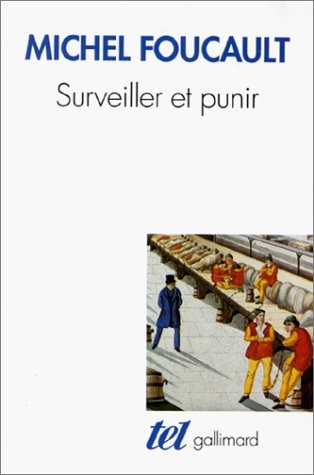 Ainsi, la séparation fondamentale entre le bien-portant et le malade, considérée par Michel Foucault dans son livre Surveiller et punir. Naissance de la prison, devient une ligne encore plus infranchissable que toutes les oppositions des idéologies classiques de la Modernité, par exemple entre la bourgeoisie et le prolétariat, les Aryens et les Juifs, les libéraux et les « ennemis de la société ouverte », etc., et verra sa ligne de division tracée entre les pôles de la « vie nue » et des « technocrates médicaux », qui ont entre leurs mains tous les instruments de la violence, de la surveillance, et de l’autorité. La différence entre celui qui est déjà malade et celui qui n’est pas encore malade, qui au début justifiait la nouvelle dictature, sera effacée, et la dictature des virologues, qui a bâti une nouvelle légitimité sur la base de cette distinction, créera un modèle complètement nouveau.
Ainsi, la séparation fondamentale entre le bien-portant et le malade, considérée par Michel Foucault dans son livre Surveiller et punir. Naissance de la prison, devient une ligne encore plus infranchissable que toutes les oppositions des idéologies classiques de la Modernité, par exemple entre la bourgeoisie et le prolétariat, les Aryens et les Juifs, les libéraux et les « ennemis de la société ouverte », etc., et verra sa ligne de division tracée entre les pôles de la « vie nue » et des « technocrates médicaux », qui ont entre leurs mains tous les instruments de la violence, de la surveillance, et de l’autorité. La différence entre celui qui est déjà malade et celui qui n’est pas encore malade, qui au début justifiait la nouvelle dictature, sera effacée, et la dictature des virologues, qui a bâti une nouvelle légitimité sur la base de cette distinction, créera un modèle complètement nouveau.
La nouvelle dictature n’est ni le fascisme ni le communisme
Cette situation rappellera à beaucoup de gens le fascisme ou le communisme, mais ces parallèles sont imaginaires. Le fascisme et le communisme représentaient tous deux des types de « société civile », bien que totalitaires, avec des idéologies bien marquées qui garantissaient des droits civiques – pas à tous, mais à la majorité significative et de facto écrasante de leurs citoyens. Le libéralisme, en réduisant toutes les identités jusqu’au niveau de l’individu, prépara la voie et créa les conditions préalables pour un type spécial de dictature post-libérale qui, à la différence du communisme et du fascisme, ne devrait pas avoir d’idéologie du tout, dans la mesure où elle n’aura pas de raison de persuader, de mobiliser ou de « séduire » l’élément de la « vie nue ». La « vie nue » est déjà consciemment prête à se soumettre à une dictature, quoi que celle-ci promette ou recommande. Les structures d’une telle dictature seront bâties sur la base du fait qu’elle combat le virus, pas sur la base d’idées et de préférences. La dictature hygiénique militaire-médicale sera caractérisée par une logique post-libérale, pour laquelle la seule opération sera le traitement rationnel de la « vie nue », dont les porteurs n’auront absolument aucun droit et aucune identité. Cet ordre sera bâti sur la séparation entre individus infectés et individus sains, et ce code dual sera aussi puissant qu’évident, sans avoir besoin de la moindre justification ou argumentation.
L’Intelligence Artificielle et ses ennemis
Ici les considérations suivantes viennent à l’esprit : dans les porteurs d’une telle dictature anti-virus post-libérale, nous ne voyons pratiquement aucun trait vraiment humain. Toute considération humaine ne ferait qu’entraver une opération efficace contre la « vie nue », et provoquerait donc un chaos agité, tremblant, recherchant la survie à tout prix. Par conséquent, l’Intelligence Artificielle, calcul mécanique abstrait, se chargerait le mieux de cette tâche. Dans la dictature militaire-médicale nous voyons une dimension cybernétique distincte, quelque chose de mécanique. Si la « vie nue » est le chaos, alors il doit y avoir un ordre mathématique froid à l’autre pôle. Et à partir de maintenant, sa seule légitimation sera non pas le consentement de la société, qui perd tout à part son instinct de survie, mais le critère même de sa capacité à prendre des décisions logiques équilibrées sans être affecté par des émotions et des passions superflues. Par conséquent, même si une dictature hygiénique militaire-médicale est établie par des humains, tôt ou tard ses principaux porteurs seront des machines.

Il n’y aura pas de retour
Plusieurs conclusions peuvent être tirées de cette analyse très préliminaire du futur proche – le futur qui a déjà commencé :
- Il est impossible de revenir à l’ordre mondial qui existait encore récemment et qui semblait si familier et si naturel que personne ne pensait à son caractère éphémère. Soit le libéralisme n’a pas atteint sa fin naturelle et l’établissement d’un « gouvernement mondial », soit l’effondrement nihiliste était son but originel, simplement couvert par un décor « humaniste » de moins en moins convaincant et de plus en plus pervers. Les représentants de l’« accélérationnisme » philosophique parlent des « Lumières Noires », soulignant cet aspect sombre et nihiliste du libéralisme comme représentant simplement le mouvement accéléré de l’homme vers l’abysse du post-humanisme. Mais en tous cas, à la place du « gouvernement mondial » et de la démocratie totale, nous sommes en train d’entrer dans une ère de nouvelle fragmentation, de « sociétés fermées » et de dictatures radicales, dépassant peut-être les camps de concentration nazis et le goulag soviétique.
-
- La fin de la globalisation ne signifiera pas, cependant, une simple transition vers le système westphalien, vers le réalisme et un système d’Etats de commerce fermé (Fichte). Une telle transition requerrait l’idéologie bien définie qui existait au début de la Modernité, mais qui a été complètement éradiquée dans la Modernité tardive, et spécialement dans la Postmodernité. La diabolisation de tout ce qui ressemblait de loin au « nationalisme » ou au « fascisme » a conduit au rejet total des identités nationales, et maintenant la gravité de la menace biologique et sa nature physiologique brutale rendent les mythes nationaux superflus. La dictature militaire-médicale n’a pas besoin de méthodes additionnelles pour motiver les masses, et de plus, le nationalisme ne fait que renforcer la dignité, la conscience de soi et le sentiment civique de la société, qui s’opposent aux règles de la « vie nue ». Pour la société à venir, il y a seulement deux critères – sain et malade. Toutes les autres formes d’identité, incluant les identités nationales, n’ont pas de sens. A peu près la même chose était vraie pour le communisme, qui était aussi une idéologie motivante qui mobilisait la conscience des citoyens pour bâtir une société meilleure. Toutes ces idéologies sont archaïques, dénuées de sens, redondantes et contre-productrices dans le combat contre le coronavirus. Par conséquent, il serait erroné de voir un « nouveau fascisme » ou un « nouveau communisme » dans le paradigme post-libéral imminent. Ce sera quelque chose d’autre.
-
- On ne peut pas écarter que cette nouvelle étape affectera si grandement la vie de l’humanité ou de ce qui en restera que, ayant traversé toutes ces épreuves et ces tribulations, l’humanité sera prête à accepter n’importe quelle forme de pouvoir, n’importe quelle idéologie et n’importe quel ordre qui affaiblira la terreur de la dictature militaire-médicale de l’Intelligence Artificielle. Et alors, dans un nouveau cycle, nous ne pouvons pas écarter un retour au projet de « gouvernement mondial », mais ce sera déjà sur une base complètement différente, parce que la société sera irréversiblement changée par la période de « quarantaine ». Ce ne sera plus le choix de la « société civile », mais le cri de la « vie nue » qui reconnaîtra n’importe quelle autorité capable d’offrir une délivrance hors des horreurs qui auront eu lieu. Cela serait le bon moment pour l’apparition de ce que les chrétiens appellent l’« Antéchrist ».
Exagération et liquidation des leaders
Une telle prévision analytique est-elle une exagération trop dramatisée ? Je pense qu’elle est tout à fait réaliste, bien que bien sûr « personne ne connaît le jour et l’heure », et dans une situation donnée tout pourrait être retardé pendant quelque temps. L’épidémie pourrait se terminer soudainement et un vaccin pourrait être trouvé. Mais tout ce qui s’est déjà produit dans les premiers mois de 2020 – l’effondrement de l’économie mondiale, toutes les mesures radicales dans la politique et les relations internationales imposées par la pandémie, la perturbation des structures de la société civile, les changements psychologiques et l’introduction de technologies de surveillance et de contrôle – est irréversible. Même si tout s’arrêtait maintenant, cela prendra tellement longtemps pour que la mondialisation libérale revienne à son final toujours retardé que de nombreux aspects critiques de la société auront déjà subi de profondes transformations. En même temps, la supposition même d’une fin rapide à la pandémie n’appartient pas au domaine de l’analyse, mais au royaume des contes de fées naïfs avec un happy-end. Regardons la vérité dans les yeux : l’ordre libéral global s’est effondré sous nos yeux, tout comme l’URSS et le système socialiste mondial tombèrent en 1991. Notre conscience refuse de croire à des changements aussi colossaux, et spécialement à leur irréversibilité. Mais nous devons y croire. Il vaut mieux les conceptualiser et les comprendre à l’avance – maintenant, tant que les choses ne sont pas encore devenues aussi graves.
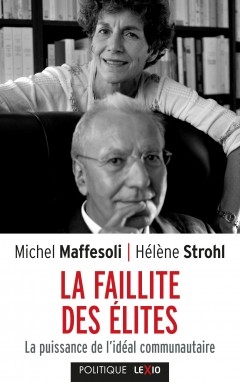 Finalement, il peut sembler que cette pandémie sera une chance pour ces leaders politiques qui n’auraient peut-être pas d’objection à tirer avantage d’une situation aussi extrême pour renforcer leur pouvoir. Mais cela pourrait marcher seulement pendant peu de temps, parce que la logique de la « vie nue » et de la dictature militaire-médicale appartient à un registre complètement différent de ce que le leader le plus autoritaire dans le système mondial moderne peut imaginer. Il est peu probable qu’un des dirigeants d’aujourd’hui soit capable de maintenir son pouvoir pendant si longtemps et de manière sûre dans des conditions aussi extrêmes. Tous, dans une mesure ou une autre, tirent leur légitimité des structures de cette démocratie libérale qui est en train d’être abolie sous nos yeux. Cette situation requerra des figures, des compétences, et des caractères complètement différents. Oui, ils commenceront probablement cette consolidation du pouvoir, et ils ont même commencé à le faire, mais il est peu probable qu’ils dureront longtemps.
Finalement, il peut sembler que cette pandémie sera une chance pour ces leaders politiques qui n’auraient peut-être pas d’objection à tirer avantage d’une situation aussi extrême pour renforcer leur pouvoir. Mais cela pourrait marcher seulement pendant peu de temps, parce que la logique de la « vie nue » et de la dictature militaire-médicale appartient à un registre complètement différent de ce que le leader le plus autoritaire dans le système mondial moderne peut imaginer. Il est peu probable qu’un des dirigeants d’aujourd’hui soit capable de maintenir son pouvoir pendant si longtemps et de manière sûre dans des conditions aussi extrêmes. Tous, dans une mesure ou une autre, tirent leur légitimité des structures de cette démocratie libérale qui est en train d’être abolie sous nos yeux. Cette situation requerra des figures, des compétences, et des caractères complètement différents. Oui, ils commenceront probablement cette consolidation du pouvoir, et ils ont même commencé à le faire, mais il est peu probable qu’ils dureront longtemps.
Il y a quelque chose de vraiment nouveau qui nous attend, et c’est très probablement quelque chose de vraiment terrifiant.
Version russe – https://www.geopolitica.ru/article/pandemiya-i-politika-v...
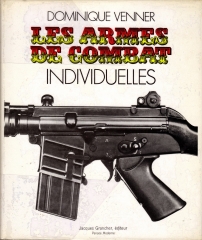 J’ai d’abord découvert Venner, l’expert en armement, avant de m’intéresser à son parcours politique et intellectuel. Pourtant « quel roman que (sa) vie ! » comme aurait dit Napoléon.
J’ai d’abord découvert Venner, l’expert en armement, avant de m’intéresser à son parcours politique et intellectuel. Pourtant « quel roman que (sa) vie ! » comme aurait dit Napoléon. Ayant étudié Marx et Lénine, il analyse le Communisme, qu’il combat depuis toujours, non seulement comme un programme politique, mais aussi comme une organisation que les militants nationalistes doivent imiter en se structurant intellectuellement.
Ayant étudié Marx et Lénine, il analyse le Communisme, qu’il combat depuis toujours, non seulement comme un programme politique, mais aussi comme une organisation que les militants nationalistes doivent imiter en se structurant intellectuellement.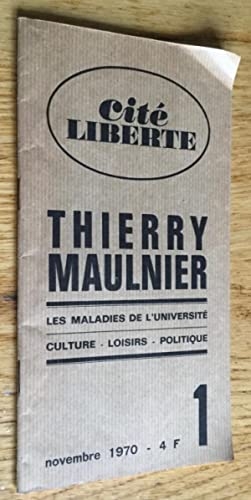 Après plusieurs colloques et sept numéros de « Cité-Liberté », l’institut se saborde en 1971.
Après plusieurs colloques et sept numéros de « Cité-Liberté », l’institut se saborde en 1971.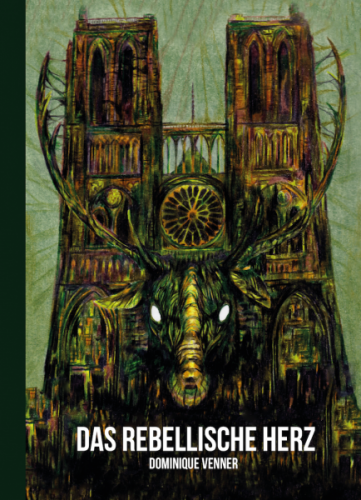 Certains ont aussitôt parlé du « geste d’un déséquilibré ». Il n’en est rien : dans une lettre envoyée à ses amis de « Radio Courtoisie » et à Robert Ménard, qui la publiera dans « Boulevard Voltaire », il explique « croire nécessaire… devant des périls immenses pour sa patrie française et européenne…de se sacrifier pour rompre la léthargie qui nous accable ». Il déclare « offrir ce qui lui reste de vie dans une intention de protestation et de fondation ».
Certains ont aussitôt parlé du « geste d’un déséquilibré ». Il n’en est rien : dans une lettre envoyée à ses amis de « Radio Courtoisie » et à Robert Ménard, qui la publiera dans « Boulevard Voltaire », il explique « croire nécessaire… devant des périls immenses pour sa patrie française et européenne…de se sacrifier pour rompre la léthargie qui nous accable ». Il déclare « offrir ce qui lui reste de vie dans une intention de protestation et de fondation ».


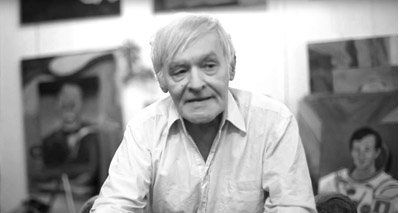
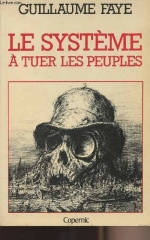 « Je n’ai pas connu Guillaume Faye assez longtemps pour oser me compter au nombre de ses amis, mais suffisamment pour avoir partagé avec lui d’excellents moments, que j’évoque ici. Je ne lui rends pas un hommage convenu, mais salue la mémoire d’un homme resté jusqu’au bout un soldat politique, un partisan européen de la Cause blanche.
« Je n’ai pas connu Guillaume Faye assez longtemps pour oser me compter au nombre de ses amis, mais suffisamment pour avoir partagé avec lui d’excellents moments, que j’évoque ici. Je ne lui rends pas un hommage convenu, mais salue la mémoire d’un homme resté jusqu’au bout un soldat politique, un partisan européen de la Cause blanche.

 del.icio.us
del.icio.us
 Digg
Digg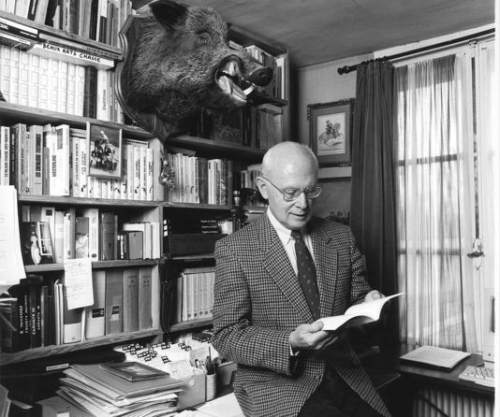
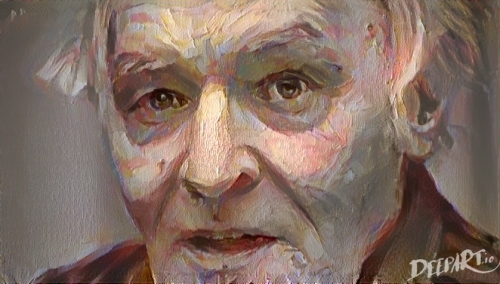
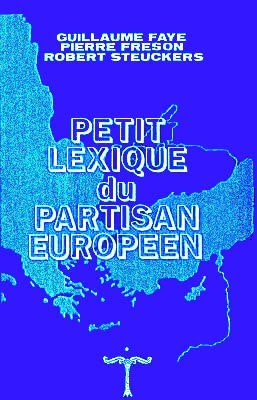 Influenced by the Konservative Revolution of pre-war Germany, particular the civilisational pessimism of Oswald Spengler, the merciless critique of liberal democracy assembled in the works of Carl Schmitt and the complex and hard to define body of work created by Ernst Junger, the Nouvelle Droite’s think tank GRECE (Groupement de Recherce et d’Études pour la Civilisation Européene, or Research and Study Group for European Civilisation) established itself, for a time, as an influential body on the French political scene.
Influenced by the Konservative Revolution of pre-war Germany, particular the civilisational pessimism of Oswald Spengler, the merciless critique of liberal democracy assembled in the works of Carl Schmitt and the complex and hard to define body of work created by Ernst Junger, the Nouvelle Droite’s think tank GRECE (Groupement de Recherce et d’Études pour la Civilisation Européene, or Research and Study Group for European Civilisation) established itself, for a time, as an influential body on the French political scene. Avowedly anti-capitalist, anti-American, anti-globalisation and pro-European unification, there is, unfortunately for the online censors, therefore very little evidence of Nouvelle Droite influences on Gove’s personal politics. Indeed, many of its lines of thought can be traced more clearly in European politicians as superficially distinct as Macron and Orban than in any British figure.
Avowedly anti-capitalist, anti-American, anti-globalisation and pro-European unification, there is, unfortunately for the online censors, therefore very little evidence of Nouvelle Droite influences on Gove’s personal politics. Indeed, many of its lines of thought can be traced more clearly in European politicians as superficially distinct as Macron and Orban than in any British figure. The European Union, similarly, links climate change to a
The European Union, similarly, links climate change to a 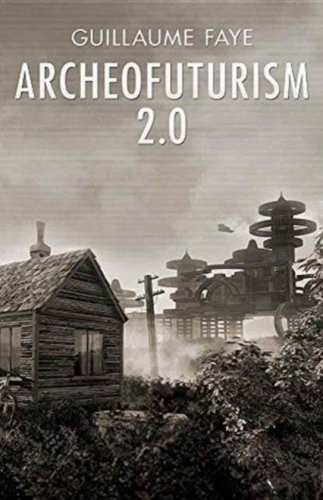 Indeed, Faye’s darkest warnings are echoed in British parliamentary politics only by the Green Party, one of whose most senior figures, the University of East Anglia’s professor of Philosophy and
Indeed, Faye’s darkest warnings are echoed in British parliamentary politics only by the Green Party, one of whose most senior figures, the University of East Anglia’s professor of Philosophy and  We should be pleased that our political representatives are reading offbeat ideas, not necessarily because they believe them, but because they represent the strange intellectual and political ferment of the early 21st century. The idea that There Is No Alternative to the neoliberal consensus is long gone. There are, if anything, too many alternatives, and they represent a future as dangerous as it is exciting.
We should be pleased that our political representatives are reading offbeat ideas, not necessarily because they believe them, but because they represent the strange intellectual and political ferment of the early 21st century. The idea that There Is No Alternative to the neoliberal consensus is long gone. There are, if anything, too many alternatives, and they represent a future as dangerous as it is exciting.


 Russia has been hit by the pandemic in a relatively mild form. I can not say that the measures the government has undertaken were (or are) exceptionally good but the situation is nevertheless not as dramatic as elsewhere. From the end of March, Russia began to close its borders with the countries most affected by coronavirus. Putin then mildly suggested citizens stay home for one week in the end of March without explaining what the legal status of this voluntary measure actually was. A full lockdown followed in the region most affected by pandemic. At the first glance the measures of the government looked a bit confused: it seemed that Putin and others were not totally aware of the real danger of the coronavirus, perhaps suspecting that Western countries had some hidden agenda (political or economic). Nonetheless, reluctantly, the government has accepted the challenge and now most regions are in total lockdown.
Russia has been hit by the pandemic in a relatively mild form. I can not say that the measures the government has undertaken were (or are) exceptionally good but the situation is nevertheless not as dramatic as elsewhere. From the end of March, Russia began to close its borders with the countries most affected by coronavirus. Putin then mildly suggested citizens stay home for one week in the end of March without explaining what the legal status of this voluntary measure actually was. A full lockdown followed in the region most affected by pandemic. At the first glance the measures of the government looked a bit confused: it seemed that Putin and others were not totally aware of the real danger of the coronavirus, perhaps suspecting that Western countries had some hidden agenda (political or economic). Nonetheless, reluctantly, the government has accepted the challenge and now most regions are in total lockdown. On one hand, many experts claim that the disease has artificial origin and was leaked (accidently or on purpose) as an act of biological warfare. Precisely in Wuhan there is allegedly one of the top biological laboratories in China. In the US, many people, including President Trump, pursue this hypothesis or suggest this is all part of the plan of a select group of globalists (like Bill Gates, Zuckerberger, George Soros and so on) to expand the deadly virus in order to impose the vaccination and eventually introduce microchips into human beings around the world. The surveillance methods already introduced to control and monitor infected people and even those who are still healthy seem to confirm such fears. There is a conspiracy theory which suggests that China has been set up as a scapegoat. We might laugh at the inconsistency of such myths and their lack of proof, but belief in such theories – especially during moments of deep crises – are easily accepted and become the basis for real actions, and could even lead to war.
On one hand, many experts claim that the disease has artificial origin and was leaked (accidently or on purpose) as an act of biological warfare. Precisely in Wuhan there is allegedly one of the top biological laboratories in China. In the US, many people, including President Trump, pursue this hypothesis or suggest this is all part of the plan of a select group of globalists (like Bill Gates, Zuckerberger, George Soros and so on) to expand the deadly virus in order to impose the vaccination and eventually introduce microchips into human beings around the world. The surveillance methods already introduced to control and monitor infected people and even those who are still healthy seem to confirm such fears. There is a conspiracy theory which suggests that China has been set up as a scapegoat. We might laugh at the inconsistency of such myths and their lack of proof, but belief in such theories – especially during moments of deep crises – are easily accepted and become the basis for real actions, and could even lead to war. 
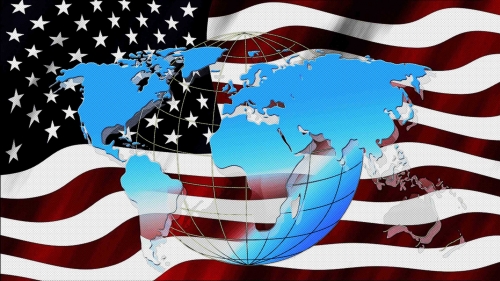
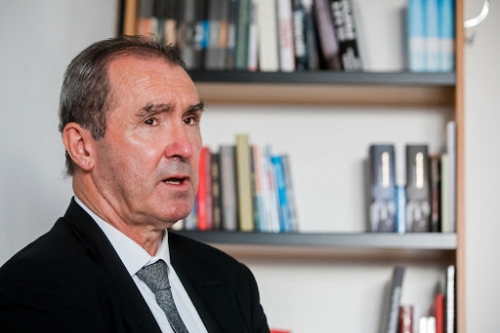
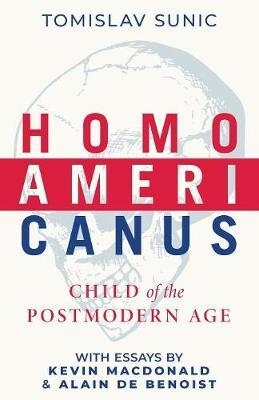 Hinsichtlich der „Umvolkung“ oder des „Bevölkerungsaustausches“ sollte man darauf hinweisen, daß es dies immer schon gegeben hat und immer geben wird. Vor kurzem gab es mehrere kleine Bevölkerungs-Austauschaktionen im ehemaligen Jugoslawien, wobei viele Kroaten, muslimische Bosniaken und Serben in Bosnien ihre ehemaligen Wohnorte verlassen mußten. Vertreibung wäre hier ein besseres Wort für diese Aktion, da dieser Bevölkerungsaustausch in Ex-Jugoslawien mitten im Kriege stattgefunden hat.
Hinsichtlich der „Umvolkung“ oder des „Bevölkerungsaustausches“ sollte man darauf hinweisen, daß es dies immer schon gegeben hat und immer geben wird. Vor kurzem gab es mehrere kleine Bevölkerungs-Austauschaktionen im ehemaligen Jugoslawien, wobei viele Kroaten, muslimische Bosniaken und Serben in Bosnien ihre ehemaligen Wohnorte verlassen mußten. Vertreibung wäre hier ein besseres Wort für diese Aktion, da dieser Bevölkerungsaustausch in Ex-Jugoslawien mitten im Kriege stattgefunden hat.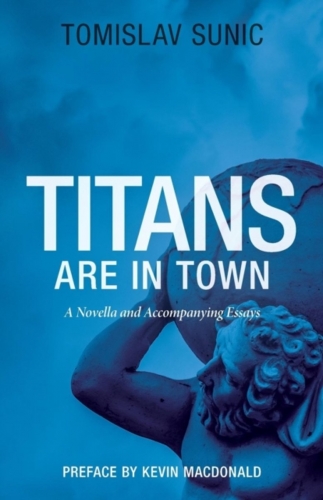 Deswegen ist jegliche Kritik an der Masseneinwanderung ohne eine vorhergehende Kritik am liberalen Handel bzw. am Kapitalismus sinnlos. Und umkehrt. Die kleinen kriminellen Migrantenschlepper, die meistens aus dem Balkan stammen, sind nur ein Abbild der großen Gutmenschen-Migrantenschlepper, die in unseren Regierungen sitzen. Auch unsere Politiker, ob sie in Brüssel oder in Berlin sitzen, befolgen nur die Regeln des freien Marktes.
Deswegen ist jegliche Kritik an der Masseneinwanderung ohne eine vorhergehende Kritik am liberalen Handel bzw. am Kapitalismus sinnlos. Und umkehrt. Die kleinen kriminellen Migrantenschlepper, die meistens aus dem Balkan stammen, sind nur ein Abbild der großen Gutmenschen-Migrantenschlepper, die in unseren Regierungen sitzen. Auch unsere Politiker, ob sie in Brüssel oder in Berlin sitzen, befolgen nur die Regeln des freien Marktes. 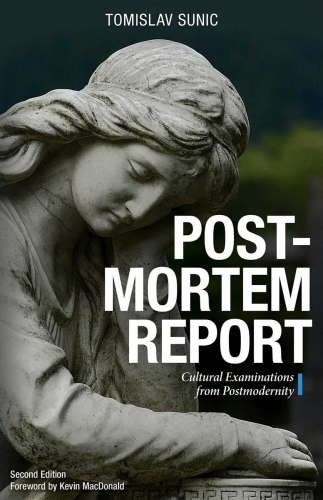 Natürlich könnte der heutige Bevölkerungsaustausch von jedem europäischen Staat jederzeit gestoppt oder auch rückgängig gemacht werden, solange Politiker Mut zur Macht haben, solange sie politische Entscheidungen treffen wollen, oder anders gesagt, solange sie die Entschlossenheit zeigen, den Zuzug der Migranten aufzuhalten.
Natürlich könnte der heutige Bevölkerungsaustausch von jedem europäischen Staat jederzeit gestoppt oder auch rückgängig gemacht werden, solange Politiker Mut zur Macht haben, solange sie politische Entscheidungen treffen wollen, oder anders gesagt, solange sie die Entschlossenheit zeigen, den Zuzug der Migranten aufzuhalten.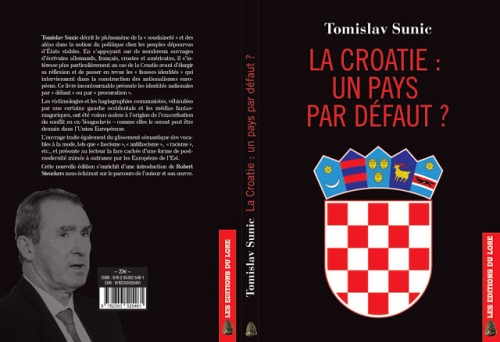
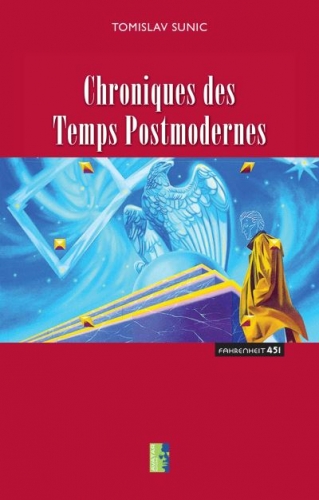 Demzufolge stellt sich die Frage, was bedeutet es heute, ein guter Europäer zu sein? Ist ein Bauer im ethnisch homogenen Rumänien oder Kroatien ein besserer Europäer, oder ist ein Nachkomme der dritten Generation eines Somaliers oder Maghrebiners, der in Berlin oder Paris wohnt, ein besserer Europäer?
Demzufolge stellt sich die Frage, was bedeutet es heute, ein guter Europäer zu sein? Ist ein Bauer im ethnisch homogenen Rumänien oder Kroatien ein besserer Europäer, oder ist ein Nachkomme der dritten Generation eines Somaliers oder Maghrebiners, der in Berlin oder Paris wohnt, ein besserer Europäer?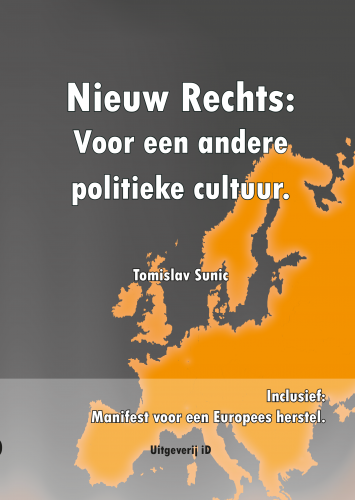 Die einzige Waffe, sich gegen den heutigen Völkeraustausch zu wehren, liegt in der Wiedererweckung unseres biologisch-kulturellen Bewußtseins. Ansonsten werden wir weiterhin nur die hohlen Floskeln der christlichen, liberalen oder kommunistischen Multikulti-Ideologie wiederkäuen. So richtig es ist, die Antifa oder den Finanzkapitalismus anzuprangern, dürfen wir nicht vergessen, daß die christlichen Kirchen die eifrigsten Boten des großen Bevölkerungsaustauschs sind.
Die einzige Waffe, sich gegen den heutigen Völkeraustausch zu wehren, liegt in der Wiedererweckung unseres biologisch-kulturellen Bewußtseins. Ansonsten werden wir weiterhin nur die hohlen Floskeln der christlichen, liberalen oder kommunistischen Multikulti-Ideologie wiederkäuen. So richtig es ist, die Antifa oder den Finanzkapitalismus anzuprangern, dürfen wir nicht vergessen, daß die christlichen Kirchen die eifrigsten Boten des großen Bevölkerungsaustauschs sind.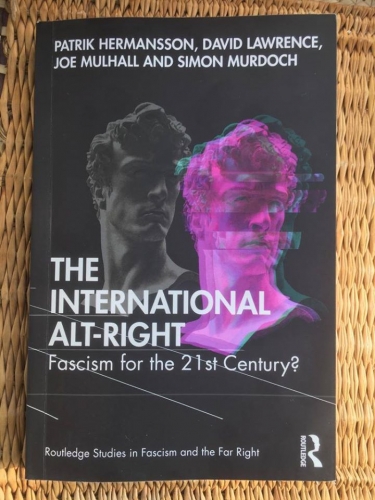
 E' un fenomeno irripetibile, inquadrabile in tutto e per tutto nel XX secolo e figlio della palingenesi collettiva della prima guerra mondiale, che forgiò una generazione in quella che Benito Mussolini definirà come “trincerocrazia”, mito fondativo di una nuova gioventù che tornava a casa dopo quattro anni di trincea. Il fascismo mussoliniano è figlio della Grande Guerra, l’evento che ha mutato per sempre la storia, l’Europa e il mondo, e senza la quale non avremmo avuto né il nazionalsocialismo in Germania né la Rivoluzione d'Ottobre in Russia. E' nel suo mezzo, e qui aveva ragione Ernst Nolte, che scoppia la “europäische Bürgerkrieg” (1917 - 1945) fra due diverse concezioni del mondo, fra quella materialista storica incarnata nel marxismo-leninismo a quella romantica, idealista e volontarista incarnata dai fascismi. E' quel carnaio a creare l'idea che sarebbe nata un’aristocrazia guerriera venuta fuori direttamente dalla gerarchia della trincea, la trincerocrazia, cioè
E' un fenomeno irripetibile, inquadrabile in tutto e per tutto nel XX secolo e figlio della palingenesi collettiva della prima guerra mondiale, che forgiò una generazione in quella che Benito Mussolini definirà come “trincerocrazia”, mito fondativo di una nuova gioventù che tornava a casa dopo quattro anni di trincea. Il fascismo mussoliniano è figlio della Grande Guerra, l’evento che ha mutato per sempre la storia, l’Europa e il mondo, e senza la quale non avremmo avuto né il nazionalsocialismo in Germania né la Rivoluzione d'Ottobre in Russia. E' nel suo mezzo, e qui aveva ragione Ernst Nolte, che scoppia la “europäische Bürgerkrieg” (1917 - 1945) fra due diverse concezioni del mondo, fra quella materialista storica incarnata nel marxismo-leninismo a quella romantica, idealista e volontarista incarnata dai fascismi. E' quel carnaio a creare l'idea che sarebbe nata un’aristocrazia guerriera venuta fuori direttamente dalla gerarchia della trincea, la trincerocrazia, cioè
 Diverso il discorso della Nouvelle Droite o la Quarta Teoria Politica di Aleksandr Dugin, che è una riattualizzazione della konservative Revolution, che non punta alla creazione di uno stato totalitario (a differenza del fascismo, che è figlio della modernità) ma piuttosto organico, federale e continentale, pescando dal pre-moderno, dall'arcaismo, dal tradizionalismo, dai valori iperborei, dalle identità ancestrali che il cosiddetto "mondialismo", figlio della post-modernità, sta cancellando. L'alt-right invece è strettamente legata alla mentalità liberale e ai modelli di produzione capitalistici. Insomma, certi storici americani è meglio che studino altro!
Diverso il discorso della Nouvelle Droite o la Quarta Teoria Politica di Aleksandr Dugin, che è una riattualizzazione della konservative Revolution, che non punta alla creazione di uno stato totalitario (a differenza del fascismo, che è figlio della modernità) ma piuttosto organico, federale e continentale, pescando dal pre-moderno, dall'arcaismo, dal tradizionalismo, dai valori iperborei, dalle identità ancestrali che il cosiddetto "mondialismo", figlio della post-modernità, sta cancellando. L'alt-right invece è strettamente legata alla mentalità liberale e ai modelli di produzione capitalistici. Insomma, certi storici americani è meglio che studino altro!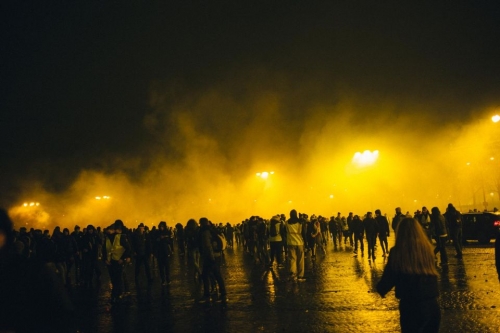
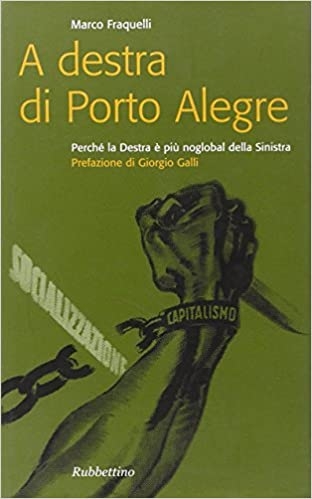 Marco Fraquelli, autore del volume A destra di Porto Alegre. Perché la Destra è più no-global della Sinistra (Rubbettino, 2005) sottolinea – pur essendo egli stesso di sinistra e discepolo del politologo Giorgio Galli – che i movimenti noglobal, nati a Seattle nel 1999 e protagonisti di importanti battaglie storiche, come la nascita nel 2001 del Social Forum di Porto Alegre in contrapposizione al World Economic Forum di Davos, e la contestazione del G8 di Genova, tendono “a contestare la globalizzazione convinti comunque che si tratti di un fenomeno che, attraverso opportuni correttivi, possa virare verso orizzonti positivi”, “che possa esistere insomma una globalizzazione ‘dal volto umano’, che sia possibile in altri termini, definire e imporre una nuova governance (e questo spiega per esempio le istanze per l’applicazione della Tobin Tax, per la cancellazione del debito contratto dai Paesi poveri, ecc.)” (1): ciò mostra che questi movimenti accettano le implicazioni della globalizzazione, rifiutando solamente il lato economico (“la Sinistra ha come obiettivo la mondializzazione senza il mercato” scrive Jean-François Revel), essendo figli dell’universalismo.
Marco Fraquelli, autore del volume A destra di Porto Alegre. Perché la Destra è più no-global della Sinistra (Rubbettino, 2005) sottolinea – pur essendo egli stesso di sinistra e discepolo del politologo Giorgio Galli – che i movimenti noglobal, nati a Seattle nel 1999 e protagonisti di importanti battaglie storiche, come la nascita nel 2001 del Social Forum di Porto Alegre in contrapposizione al World Economic Forum di Davos, e la contestazione del G8 di Genova, tendono “a contestare la globalizzazione convinti comunque che si tratti di un fenomeno che, attraverso opportuni correttivi, possa virare verso orizzonti positivi”, “che possa esistere insomma una globalizzazione ‘dal volto umano’, che sia possibile in altri termini, definire e imporre una nuova governance (e questo spiega per esempio le istanze per l’applicazione della Tobin Tax, per la cancellazione del debito contratto dai Paesi poveri, ecc.)” (1): ciò mostra che questi movimenti accettano le implicazioni della globalizzazione, rifiutando solamente il lato economico (“la Sinistra ha come obiettivo la mondializzazione senza il mercato” scrive Jean-François Revel), essendo figli dell’universalismo. La nouvelle droite svilupperà le prime analisi sul mondialismo, che non declinerà mai nel cospirazionismo, descrivendolo come un tratto ontologico del capitalismo stesso, che per sua natura non può rimanere relegato entro i confini di un singolo Stato ma ha la tendenza a ‘mondializzarsi’. L’analisi del fenomeno viene fatta nel 1981 dall’esponente del Grece Guillaume Faye nel libro Le système à tuer les peuples (Il sistema per uccidere i popoli), dove l’autore, citando Weber, Schmitt, Habermas e la Scuola di Francoforte – ergo, non intellettuali di destra – spiega che dal 1945 si sarebbe sviluppato globalmente un Sistema, descritto in questi termini: “La caratteristica precipua del Sistema, che oggi esercita la sua azione alienante e repressiva in gradi diversi su tutti i popoli e tutte le culture, è in effetti quella di essere costituito da un insieme di strutture di potere – di carattere principalmente economico e culturale, ma anche direttamente politico, tramite le grandi potenze e le istituzioni internazionali – completamente inorganico, funzionante in modo meccanico, senza altro significato che la propria sopravvivenza ed espansione in vista di un’uscita definitiva dell’umanità dalla storia [...] le espressioni particolari del suo potere sociale sono [...] il monopolio dell’informazione e l’uso repressivo del potere culturale” (4). Una descrizione che ricorda la Megamacchina “tecno-socio-economica” analizzata negli anni Novanta da Serge Latouche, “un bolide che marcia a tutta velocità ma [che] ha perso il guidatore”, i cui effetti determinano “conseguenze distruttive non solo sulle culture nazionali, ma anche sul politico e, in definitiva, sul legame sociale, tanto al Nord quanto al Sud” (5). La principale arma usata dal Sistema per “uccidere l’anima” (l’identità) è una subdola forma di penetrazione culturale che omologa i costumi e, in conformità al vigente complesso economico, i consumi. Gli Stati Uniti, visto il loro carattere antitradizionale (è una nazione giovane nata dall’immigrazione e dal melting pot di popoli diversi fra loro) sono vittime stesse del Sistema da loro creato, che procede da solo per mezzo di una “classe tecnocratica cosmopolita” (manager, amministratori delegati, decisori finanziari) che dirige una politica ormai svuotata da ogni potere: “Contrariamente alle tesi marxiste, nessun ‘direttore d’orchestra’ più o meno occulto ci governa. Nessuna volontà coscientemente programmata anima l’insieme per mezzo di decisioni globali a lungo termine. Il potere tende a non aver più né ubicazione né volto; ma sono sorti poteri che ci circondano e ci fanno partecipare al nostro proprio asservimento. La ‘direzione’ delle società si effettua oggi al di fuori del concetto di Führung. Il Sistema funziona in gran parte per autoregolazione incitativa. I centri di decisione influiscono, tramite gli investimenti, le tattiche economiche e le tattiche tecnologiche, sulle forme di vita sociale senza che vi sia alcuna concertazione d’assieme. Strategie separate e sempre impostate sul breve termine si incontrano e convergono. Questa convergenza va nel senso del rafforzamento del Sistema stesso, della sua cultura mondialista, della sua sovranazionalità, così che il Sistema funziona per se stesso, senza altro fine che la propria crescita. Le sue istanze direttive molteplici decentrate, si confondono con la sua stessa struttura organizzativa. Imprese nazionali, amministrazioni statali, multinazionali, reti bancarie, organismi internazionali si ripartiscono tutti un potere frammentato. Eppure, a dispetto, o forse proprio a causa dei conflitti interni d’interessi, come la concorrenza commerciale, l’insieme risulta ordinato alla costruzione dello stesso mondo, dello stesso tipo di società, del predominio degli stessi valori. Tutto concorda nell’indebolire le culture dei popoli e le sovranità nazionali, e nello stabilire su tutta la Terra la stessa civilizzazione” (6). Il Sistema cancella i territori e le loro sovranità, modellandole così a immagine e somiglianza dell’unico sistema vincente, quello nordamericano: “Il mondialismo del Sistema non procede dunque per conquista o repressione degli insiemi territoriali e nazionali, ma per digestione lenta; diffonde le sue strutture materiali e mentali insediandole a lato e al di sopra dei valori nazionali e territoriali. Si ‘stabilisce’ come i quaccheri, senza tentare di irreggimentare direttamente, [...] parassitando i valori e le tradizioni di radicamento territoriale. La presa di coscienza del fenomeno si rivela di conseguenza difficile. Parallelamente alla loro formazione ‘nazionale’ i giovani dirigenti d’azienda del mondo intero hanno oggi bisogno, per vendersi e valorizzarsi, del diploma di una scuola americana. Niente di obbligatorio in questa procedura; ma poco a poco il valore di questo diploma americano e ‘occidentale’ soppianta gli insegnamenti nazionali, la cui credibilità deperisce. Un’istruzione economica mondiale unica vede allora la luce. Essa veicola naturalmente l’ideologia del Sistema” (7).
La nouvelle droite svilupperà le prime analisi sul mondialismo, che non declinerà mai nel cospirazionismo, descrivendolo come un tratto ontologico del capitalismo stesso, che per sua natura non può rimanere relegato entro i confini di un singolo Stato ma ha la tendenza a ‘mondializzarsi’. L’analisi del fenomeno viene fatta nel 1981 dall’esponente del Grece Guillaume Faye nel libro Le système à tuer les peuples (Il sistema per uccidere i popoli), dove l’autore, citando Weber, Schmitt, Habermas e la Scuola di Francoforte – ergo, non intellettuali di destra – spiega che dal 1945 si sarebbe sviluppato globalmente un Sistema, descritto in questi termini: “La caratteristica precipua del Sistema, che oggi esercita la sua azione alienante e repressiva in gradi diversi su tutti i popoli e tutte le culture, è in effetti quella di essere costituito da un insieme di strutture di potere – di carattere principalmente economico e culturale, ma anche direttamente politico, tramite le grandi potenze e le istituzioni internazionali – completamente inorganico, funzionante in modo meccanico, senza altro significato che la propria sopravvivenza ed espansione in vista di un’uscita definitiva dell’umanità dalla storia [...] le espressioni particolari del suo potere sociale sono [...] il monopolio dell’informazione e l’uso repressivo del potere culturale” (4). Una descrizione che ricorda la Megamacchina “tecno-socio-economica” analizzata negli anni Novanta da Serge Latouche, “un bolide che marcia a tutta velocità ma [che] ha perso il guidatore”, i cui effetti determinano “conseguenze distruttive non solo sulle culture nazionali, ma anche sul politico e, in definitiva, sul legame sociale, tanto al Nord quanto al Sud” (5). La principale arma usata dal Sistema per “uccidere l’anima” (l’identità) è una subdola forma di penetrazione culturale che omologa i costumi e, in conformità al vigente complesso economico, i consumi. Gli Stati Uniti, visto il loro carattere antitradizionale (è una nazione giovane nata dall’immigrazione e dal melting pot di popoli diversi fra loro) sono vittime stesse del Sistema da loro creato, che procede da solo per mezzo di una “classe tecnocratica cosmopolita” (manager, amministratori delegati, decisori finanziari) che dirige una politica ormai svuotata da ogni potere: “Contrariamente alle tesi marxiste, nessun ‘direttore d’orchestra’ più o meno occulto ci governa. Nessuna volontà coscientemente programmata anima l’insieme per mezzo di decisioni globali a lungo termine. Il potere tende a non aver più né ubicazione né volto; ma sono sorti poteri che ci circondano e ci fanno partecipare al nostro proprio asservimento. La ‘direzione’ delle società si effettua oggi al di fuori del concetto di Führung. Il Sistema funziona in gran parte per autoregolazione incitativa. I centri di decisione influiscono, tramite gli investimenti, le tattiche economiche e le tattiche tecnologiche, sulle forme di vita sociale senza che vi sia alcuna concertazione d’assieme. Strategie separate e sempre impostate sul breve termine si incontrano e convergono. Questa convergenza va nel senso del rafforzamento del Sistema stesso, della sua cultura mondialista, della sua sovranazionalità, così che il Sistema funziona per se stesso, senza altro fine che la propria crescita. Le sue istanze direttive molteplici decentrate, si confondono con la sua stessa struttura organizzativa. Imprese nazionali, amministrazioni statali, multinazionali, reti bancarie, organismi internazionali si ripartiscono tutti un potere frammentato. Eppure, a dispetto, o forse proprio a causa dei conflitti interni d’interessi, come la concorrenza commerciale, l’insieme risulta ordinato alla costruzione dello stesso mondo, dello stesso tipo di società, del predominio degli stessi valori. Tutto concorda nell’indebolire le culture dei popoli e le sovranità nazionali, e nello stabilire su tutta la Terra la stessa civilizzazione” (6). Il Sistema cancella i territori e le loro sovranità, modellandole così a immagine e somiglianza dell’unico sistema vincente, quello nordamericano: “Il mondialismo del Sistema non procede dunque per conquista o repressione degli insiemi territoriali e nazionali, ma per digestione lenta; diffonde le sue strutture materiali e mentali insediandole a lato e al di sopra dei valori nazionali e territoriali. Si ‘stabilisce’ come i quaccheri, senza tentare di irreggimentare direttamente, [...] parassitando i valori e le tradizioni di radicamento territoriale. La presa di coscienza del fenomeno si rivela di conseguenza difficile. Parallelamente alla loro formazione ‘nazionale’ i giovani dirigenti d’azienda del mondo intero hanno oggi bisogno, per vendersi e valorizzarsi, del diploma di una scuola americana. Niente di obbligatorio in questa procedura; ma poco a poco il valore di questo diploma americano e ‘occidentale’ soppianta gli insegnamenti nazionali, la cui credibilità deperisce. Un’istruzione economica mondiale unica vede allora la luce. Essa veicola naturalmente l’ideologia del Sistema” (7). Ergo, la nouvelle droite, grazie al volume di Guillaume Faye, de-ebraicizza e de-complottizza l’analisi sul mondialismo, anche se negli ambienti del radicalismo di destra il concetto continuava sovrapporsi alla retorica antigiudaica. Non è casuale che Orion, che nel decennio Novanta sarà Organo del Fronte antimondialista, nei primi anni di vita editoriale, e cioè fra il 1984 e il 1987 circa, userà ancora tematiche cospirazioni ste antigiudaiche pescate dai Protocolli dei Savi di Sion, denunciando alleanze occulte fra l’alta finanza, ovviamente ebraica, le organizzazioni massoniche con a capo il B’nai B’rith, e i numerosi circoli sionisti sparsi in tutto l’Occidente, descritti come “l’architrave del progetto mondialista” dato che sarebbero tutti “casa, borsa e Sinagoga” (8). Il sionismo e il mondialismo sarebbero quindi considerate le due facce della stessa medaglia: il sionismo è “una delle componenti più importanti [...] del discorso mondialista” si legge in Orion, “il sionismo [...] è genocida e razzista [...] oggi l’unico vero razzismo esistente al mondo è quello praticato dal sionismo nazionale e internazionale. Un razzismo che affonda le sue radici nella storia, nella cultura e nella religione ma, certamente, l’unico vero e identificabile potere razzista e genocida” (9).
Ergo, la nouvelle droite, grazie al volume di Guillaume Faye, de-ebraicizza e de-complottizza l’analisi sul mondialismo, anche se negli ambienti del radicalismo di destra il concetto continuava sovrapporsi alla retorica antigiudaica. Non è casuale che Orion, che nel decennio Novanta sarà Organo del Fronte antimondialista, nei primi anni di vita editoriale, e cioè fra il 1984 e il 1987 circa, userà ancora tematiche cospirazioni ste antigiudaiche pescate dai Protocolli dei Savi di Sion, denunciando alleanze occulte fra l’alta finanza, ovviamente ebraica, le organizzazioni massoniche con a capo il B’nai B’rith, e i numerosi circoli sionisti sparsi in tutto l’Occidente, descritti come “l’architrave del progetto mondialista” dato che sarebbero tutti “casa, borsa e Sinagoga” (8). Il sionismo e il mondialismo sarebbero quindi considerate le due facce della stessa medaglia: il sionismo è “una delle componenti più importanti [...] del discorso mondialista” si legge in Orion, “il sionismo [...] è genocida e razzista [...] oggi l’unico vero razzismo esistente al mondo è quello praticato dal sionismo nazionale e internazionale. Un razzismo che affonda le sue radici nella storia, nella cultura e nella religione ma, certamente, l’unico vero e identificabile potere razzista e genocida” (9).
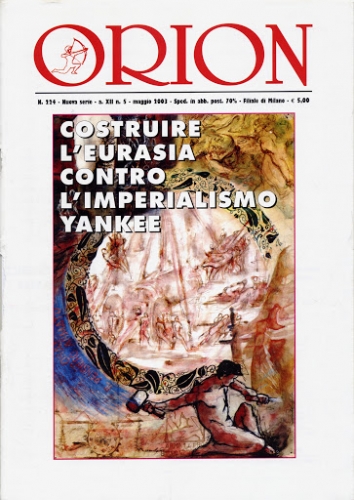 Fondamentali poi i club internazionali politici, i quali ufficiosamente fungerebbero da cardine fra i vari “attori mondialisti”, quali la Trilateral Commission, il Bilderberg Group e il Club di Roma, a cui Orion dedica numerose analisi e, all’inizio, l’inserto Orion-finanza – diretto dal torinese Mario Borghezio, poi esponente della Lega Nord e tramite fra il Carroccio e il radicalismo di destra. Nell’ultimo fascicolo, il numero 4 del maggio 1986, Orion pubblica per la prima volta l’elenco dei membri della Trilateral Commission, organizzazione che prende il nome dalla teoria del suo ideologo, Zbigniw Brzezinsky, che teorizza la fine del bipolarismo indicando in “tre pilastri” – Usa, Giappone e Europa occidentale – gli attori di un progetto liberoscambista capace di avvicinare tali zone per poi unificare il sistema economico-finanziario. Grazie a pubblicazioni di questo tipo – nonostante persista una certa retorica antiebraica – Orion cerca di archiviare l’ormai vetusta e desueta teoria del ‘grande complotto’ a opera della “grande piovra ‘giudaico-massonica’ che manovrerebbe tutto. Descrivendo un vertice della Trilateral tenutosi a Madrid dopo la riunione del G7 a Tokyo a metà anni Ottanta, che vedeva riunite persone come David Rockfeller, Isamu Yamashita, Giovanni Agnelli, Zbigniew Brzezinski (ex consigliere di Jimmy Carter) e Robert McNamara, tutti interessati alla Spagna soprattutto dopo il suo ingresso nella Comunità europea per il suo ruolo strategico (“trampolino di lancio per la strategia mondialista americana”) per le sue relazioni coi Paesi arabi, il Nord Africa e l’America Latina, ruolo svolto precedentemente dal Giappone per l’Europa, Murelli scriverà: “Chi oggi si domanda come sia stata possibile l’espansione dell’industria giapponese in così breve tempo, trova in questa autorevole dichiarazione la risposta al quesito”. La Trilateral Commission “sta soppiantando le vecchie strutture mondialiste quali la Massoneria”. Infatti, continua Murelli, “è forse un caso che la politica finanziaria nazionale di questi ultimi tempi ha come chiodo fisso, per esempio, l’internazionalizzazione non solo dei capitali, ma anche e soprattutto delle imprese e della produzione? È forse un caso che se mentre colano a picco personaggi come Calvi e Sindona emergono i vari De Benedetti, Berlusconi, Agnelli ecc.? È forse un caso che proprio Agnelli si sia battuto affinché l’affare Sirwkoski fosse vantaggioso per un’impresa americana piuttosto che da un’impresa italiana? E ancora: è un caso che l’Avvocato sostenga l’acquisto di Alfa Romeo da parte della Ford, azienda automobilistica che attraverso la sua Fondazione – ma guarda caso! – assieme alla Lilly Endowment, alla Rockfeller Brothers Fund e alla Kattering Fondation ha, fin dall’inizio, costituito una delle principali fonti di finanziamento della Trilateral?” (16).
Fondamentali poi i club internazionali politici, i quali ufficiosamente fungerebbero da cardine fra i vari “attori mondialisti”, quali la Trilateral Commission, il Bilderberg Group e il Club di Roma, a cui Orion dedica numerose analisi e, all’inizio, l’inserto Orion-finanza – diretto dal torinese Mario Borghezio, poi esponente della Lega Nord e tramite fra il Carroccio e il radicalismo di destra. Nell’ultimo fascicolo, il numero 4 del maggio 1986, Orion pubblica per la prima volta l’elenco dei membri della Trilateral Commission, organizzazione che prende il nome dalla teoria del suo ideologo, Zbigniw Brzezinsky, che teorizza la fine del bipolarismo indicando in “tre pilastri” – Usa, Giappone e Europa occidentale – gli attori di un progetto liberoscambista capace di avvicinare tali zone per poi unificare il sistema economico-finanziario. Grazie a pubblicazioni di questo tipo – nonostante persista una certa retorica antiebraica – Orion cerca di archiviare l’ormai vetusta e desueta teoria del ‘grande complotto’ a opera della “grande piovra ‘giudaico-massonica’ che manovrerebbe tutto. Descrivendo un vertice della Trilateral tenutosi a Madrid dopo la riunione del G7 a Tokyo a metà anni Ottanta, che vedeva riunite persone come David Rockfeller, Isamu Yamashita, Giovanni Agnelli, Zbigniew Brzezinski (ex consigliere di Jimmy Carter) e Robert McNamara, tutti interessati alla Spagna soprattutto dopo il suo ingresso nella Comunità europea per il suo ruolo strategico (“trampolino di lancio per la strategia mondialista americana”) per le sue relazioni coi Paesi arabi, il Nord Africa e l’America Latina, ruolo svolto precedentemente dal Giappone per l’Europa, Murelli scriverà: “Chi oggi si domanda come sia stata possibile l’espansione dell’industria giapponese in così breve tempo, trova in questa autorevole dichiarazione la risposta al quesito”. La Trilateral Commission “sta soppiantando le vecchie strutture mondialiste quali la Massoneria”. Infatti, continua Murelli, “è forse un caso che la politica finanziaria nazionale di questi ultimi tempi ha come chiodo fisso, per esempio, l’internazionalizzazione non solo dei capitali, ma anche e soprattutto delle imprese e della produzione? È forse un caso che se mentre colano a picco personaggi come Calvi e Sindona emergono i vari De Benedetti, Berlusconi, Agnelli ecc.? È forse un caso che proprio Agnelli si sia battuto affinché l’affare Sirwkoski fosse vantaggioso per un’impresa americana piuttosto che da un’impresa italiana? E ancora: è un caso che l’Avvocato sostenga l’acquisto di Alfa Romeo da parte della Ford, azienda automobilistica che attraverso la sua Fondazione – ma guarda caso! – assieme alla Lilly Endowment, alla Rockfeller Brothers Fund e alla Kattering Fondation ha, fin dall’inizio, costituito una delle principali fonti di finanziamento della Trilateral?” (16).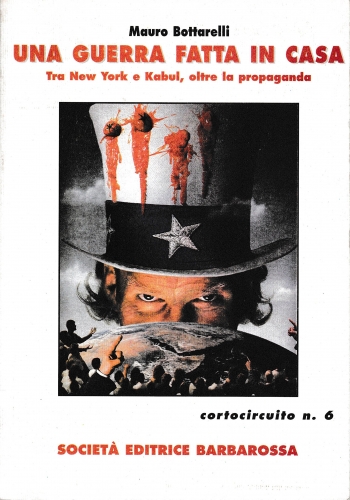 Le pubblicazioni della Società Editrice Barbarossa, contestando l’analisi complottista, inizieranno a identificare negli Stati Uniti il principale motore del mondialismo (contraddicendo così l’analisi di Guillaume Faye secondo cui tale processo di omologazione non presenterebbe “nessun ‘direttore d’orchestra’ più o meno occulto” che “anima l’insieme per mezzo di decisioni globali a lungo termine”), per il suo volere “la creazione di un unico governo o amministrazione (il Nuovo Ordine Mondiale), di un unico assetto politico, istituzionale e sociale (il liberismo), di un unico sistema di valori (individualismo-egualitarismo-dottrina dei Diritti dell’Uomo), e quindi di un unico insieme di costumi e di stile di vita (il consumismo) estesi a tutta la Terra e funzionali al dominio assoluto da parte delle forze politiche, economiche e culturali che lo incarnano: le élite della finanza mondiale!” (17). Si attacca l’Occidente, un sistema americanocentrico (una centralità dovuta al fatto che la stragrande maggioranza delle multinazionali e le più influenti lobby finanziarie hanno la loro sede legale negli Stati Uniti), anche se i suoi centri d’irradiazione sono policentrici e sparsi in tutto il globo. Infatti, “le imprese multinazionali – oltre l’80 per cento dei casi a sede statunitense – dominano il mercato delle principali derrate di base e degli altri settore chiave (macchinari industriali e agricoli, fertilizzanti, elettronica, ecc.)” (18). Gli ingredienti per la creazione di questo One World (il Nuovo Ordine Mondiale) uniformato all’American way of life sarebbero le “strutture tecnoeconomiche, l’ideologia universalista e la sottocultura di massa che potremmo definire – sottolinea Faye – ‘americano occidentale’”.
Le pubblicazioni della Società Editrice Barbarossa, contestando l’analisi complottista, inizieranno a identificare negli Stati Uniti il principale motore del mondialismo (contraddicendo così l’analisi di Guillaume Faye secondo cui tale processo di omologazione non presenterebbe “nessun ‘direttore d’orchestra’ più o meno occulto” che “anima l’insieme per mezzo di decisioni globali a lungo termine”), per il suo volere “la creazione di un unico governo o amministrazione (il Nuovo Ordine Mondiale), di un unico assetto politico, istituzionale e sociale (il liberismo), di un unico sistema di valori (individualismo-egualitarismo-dottrina dei Diritti dell’Uomo), e quindi di un unico insieme di costumi e di stile di vita (il consumismo) estesi a tutta la Terra e funzionali al dominio assoluto da parte delle forze politiche, economiche e culturali che lo incarnano: le élite della finanza mondiale!” (17). Si attacca l’Occidente, un sistema americanocentrico (una centralità dovuta al fatto che la stragrande maggioranza delle multinazionali e le più influenti lobby finanziarie hanno la loro sede legale negli Stati Uniti), anche se i suoi centri d’irradiazione sono policentrici e sparsi in tutto il globo. Infatti, “le imprese multinazionali – oltre l’80 per cento dei casi a sede statunitense – dominano il mercato delle principali derrate di base e degli altri settore chiave (macchinari industriali e agricoli, fertilizzanti, elettronica, ecc.)” (18). Gli ingredienti per la creazione di questo One World (il Nuovo Ordine Mondiale) uniformato all’American way of life sarebbero le “strutture tecnoeconomiche, l’ideologia universalista e la sottocultura di massa che potremmo definire – sottolinea Faye – ‘americano occidentale’”.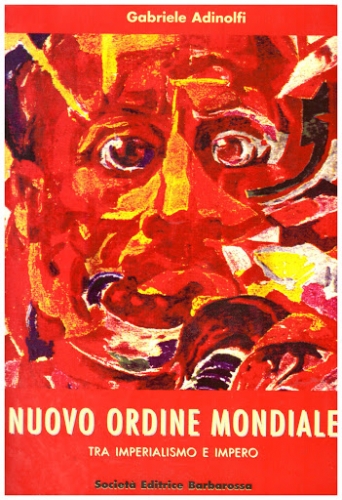 Identificando nel monoteismo giudaico-cristiano la cultura principalmente responsabile della genesi del mondialismo, notiamo come il gruppo di Orion recuperi le suggestioni neopagane della nouvelle droite, però scevre da ogni rimando di tipo antisemita. L’altra peculiarità del mondialismo è il rifarsi all’“ideologia universalista”, espletata “sia attraverso l’utopia cosmopolita e pacifista alla Emergency oppure tramite lo sbrigativo pragmatismo yankee alla Bush”, una “moderna religione” laica che fa sua la dottrina dei diritti umani, “la suprema espressione dell’Egualitarismo”, una “tendenza storica nata e affermatasi per la prima volta nella storia con il giudeo-cristianesimo e in seguito dispiegatasi storicamente nelle sue varianti laiche (democrazia liberale, comunismo, mondialismo ecc.)”, che impone una “morale presuntamente universale [che] fornisce l’armatura ideologica a un neo-colonialismo che al posto del ‘fardello dell’uomo bianco’ ha oggi come giustificazione un devastante cocktail di angelismo e ipocrisia. [...] La distruzione dei popoli passa anche da qui, dall’imposizione a livello planetario dei ‘valori’ occidentali e dalla conseguente disintegrazione di ogni legame organico, di ogni tradizione particolare, di ogni residuo di comunità – tutti ostacoli alla presa di coscienza della nuova ‘identità globale’ da parte del cittadino dell’era della globalizzazione. [...] rigettare la dottrina dei diritti dell’uomo non significa parteggiare per lo sterminio, per l’ingiustizia o per l’odio. [...] Il riconoscimento dei diritti umani, di per sé, non fonda proprio nulla, se non quel tipo di giustizia e di libertà che, tautologicamente, si trovano espresse... nella dottrina dei diritti umani! Malgrado il fatto che i sostenitori di tale dottrina continuino a pensare di aver ‘inventato la felicità’, occorre sostenere con decisione che un’altra giustizia, un’altra libertà, un’altra pace sono possibili. Opporsi ai diritti dell’uomo significa rifiutare una morale, un’antropologia, una certa idea dei rapporti internazionali e della politica, una visione del mondo globale figlia di una tendenza storica ben individuabile” (20).
Identificando nel monoteismo giudaico-cristiano la cultura principalmente responsabile della genesi del mondialismo, notiamo come il gruppo di Orion recuperi le suggestioni neopagane della nouvelle droite, però scevre da ogni rimando di tipo antisemita. L’altra peculiarità del mondialismo è il rifarsi all’“ideologia universalista”, espletata “sia attraverso l’utopia cosmopolita e pacifista alla Emergency oppure tramite lo sbrigativo pragmatismo yankee alla Bush”, una “moderna religione” laica che fa sua la dottrina dei diritti umani, “la suprema espressione dell’Egualitarismo”, una “tendenza storica nata e affermatasi per la prima volta nella storia con il giudeo-cristianesimo e in seguito dispiegatasi storicamente nelle sue varianti laiche (democrazia liberale, comunismo, mondialismo ecc.)”, che impone una “morale presuntamente universale [che] fornisce l’armatura ideologica a un neo-colonialismo che al posto del ‘fardello dell’uomo bianco’ ha oggi come giustificazione un devastante cocktail di angelismo e ipocrisia. [...] La distruzione dei popoli passa anche da qui, dall’imposizione a livello planetario dei ‘valori’ occidentali e dalla conseguente disintegrazione di ogni legame organico, di ogni tradizione particolare, di ogni residuo di comunità – tutti ostacoli alla presa di coscienza della nuova ‘identità globale’ da parte del cittadino dell’era della globalizzazione. [...] rigettare la dottrina dei diritti dell’uomo non significa parteggiare per lo sterminio, per l’ingiustizia o per l’odio. [...] Il riconoscimento dei diritti umani, di per sé, non fonda proprio nulla, se non quel tipo di giustizia e di libertà che, tautologicamente, si trovano espresse... nella dottrina dei diritti umani! Malgrado il fatto che i sostenitori di tale dottrina continuino a pensare di aver ‘inventato la felicità’, occorre sostenere con decisione che un’altra giustizia, un’altra libertà, un’altra pace sono possibili. Opporsi ai diritti dell’uomo significa rifiutare una morale, un’antropologia, una certa idea dei rapporti internazionali e della politica, una visione del mondo globale figlia di una tendenza storica ben individuabile” (20).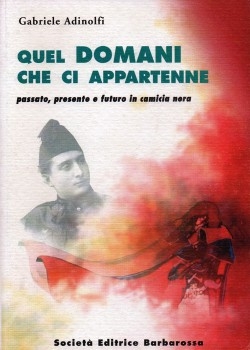 Un antimondialismo che non è anticapitalismo
Un antimondialismo che non è anticapitalismo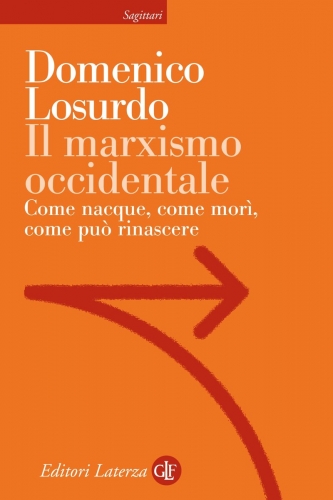 Una delle motivazioni di tale crisi, rileva il filosofo marxista Domenco Losurdo, è da ricercare dal fatto che la sinistra italiana e occidentale risulta assente, incapace di rendersi realmente indipendente dal sistema imperialistico, quando non colpevole di aver spianato la strada a un neoimperialismo di ritorno sotto forma di guerre di esportazione della democrazia occidentale, veicolando un pregiudizio eurocentrico e inconsciamente razzista. Secondo Losurdo questo avviene perché s’è creata una dicotomia fra marxismo occidentale, “che ha sviluppato una sua personale riflessione separandosi dallo sviluppo del pensiero marxista nel resto del mondo, un marxismo occidentale che ha influenzato i movimenti della cosiddetta ‘nuova sinistra’ e il filone sviluppatosi dal ‘68 in poi, divenendo egemone dopo il crollo dell’Unione Sovietica. Un pensiero, i cui cantori odierni sarebbero Negri, Hardt, Zizec e prima ancora Foucault e Arent, che ha rimosso dalle sue riflessioni il nodo della lotta antimperialista di matrice leninista e quello sullo sviluppo delle forze produttive, come invece hanno continuato a fare quei movimenti affermatisi fuori dall’Occidente, che si sono posti l’obiettivo di fare uscire dalla miseria e dalla fame centinaia di milioni di essere umani” (27). Tutti intellettuali – pensiamo alla fortuna entro Rifondazione comunista o nell’area noglobal del libro di Toni Negri e Michael Hardt Impero e Moltitudini – che non contestavano la globalizzazione in quanto tale, ma solo la sua governance èlitaria, auspicandone, come notava Fraquelli all’inizio, una dal “volto umano”, cioè gestita dal basso.
Una delle motivazioni di tale crisi, rileva il filosofo marxista Domenco Losurdo, è da ricercare dal fatto che la sinistra italiana e occidentale risulta assente, incapace di rendersi realmente indipendente dal sistema imperialistico, quando non colpevole di aver spianato la strada a un neoimperialismo di ritorno sotto forma di guerre di esportazione della democrazia occidentale, veicolando un pregiudizio eurocentrico e inconsciamente razzista. Secondo Losurdo questo avviene perché s’è creata una dicotomia fra marxismo occidentale, “che ha sviluppato una sua personale riflessione separandosi dallo sviluppo del pensiero marxista nel resto del mondo, un marxismo occidentale che ha influenzato i movimenti della cosiddetta ‘nuova sinistra’ e il filone sviluppatosi dal ‘68 in poi, divenendo egemone dopo il crollo dell’Unione Sovietica. Un pensiero, i cui cantori odierni sarebbero Negri, Hardt, Zizec e prima ancora Foucault e Arent, che ha rimosso dalle sue riflessioni il nodo della lotta antimperialista di matrice leninista e quello sullo sviluppo delle forze produttive, come invece hanno continuato a fare quei movimenti affermatisi fuori dall’Occidente, che si sono posti l’obiettivo di fare uscire dalla miseria e dalla fame centinaia di milioni di essere umani” (27). Tutti intellettuali – pensiamo alla fortuna entro Rifondazione comunista o nell’area noglobal del libro di Toni Negri e Michael Hardt Impero e Moltitudini – che non contestavano la globalizzazione in quanto tale, ma solo la sua governance èlitaria, auspicandone, come notava Fraquelli all’inizio, una dal “volto umano”, cioè gestita dal basso.



 La fin de « l’Unique et sa propriété »
La fin de « l’Unique et sa propriété » La société ouverte et la migration sans limite sont entrées en contradiction directe avec les standards sanitaires de base. En fait, un régime dictatorial a été rapidement établi dans le monde entier, sous lequel le pouvoir a été transféré à une entité complètement nouvelle. Ni « l’Ego » ni sa « propriété », ni toutes les superstructures géantes du monde qui garantissaient leurs droits et leurs statuts légaux et légitimes ne sont plus considérés comme la source du pouvoir politique. Ce que Giorgio Agamben a nommé la « vie nue », c’est-à-dire l’impératif de survie physique absolument spécial qui n’a rien à voir avec la logique du capitalisme libéral, est passé au premier plan. Ni l’égalité, les droits, la loi, la propriété privée, les décisions collectives, le système des obligations mutuelles, ni aucun autre principe fondamental de la démocratie libérale n’a de pouvoir réel. Seuls ces mécanismes qui contribuent à la survie, pour stopper l’infection et pourvoir aux besoins purement physiologiques les plus simples, sont importants maintenant.
La société ouverte et la migration sans limite sont entrées en contradiction directe avec les standards sanitaires de base. En fait, un régime dictatorial a été rapidement établi dans le monde entier, sous lequel le pouvoir a été transféré à une entité complètement nouvelle. Ni « l’Ego » ni sa « propriété », ni toutes les superstructures géantes du monde qui garantissaient leurs droits et leurs statuts légaux et légitimes ne sont plus considérés comme la source du pouvoir politique. Ce que Giorgio Agamben a nommé la « vie nue », c’est-à-dire l’impératif de survie physique absolument spécial qui n’a rien à voir avec la logique du capitalisme libéral, est passé au premier plan. Ni l’égalité, les droits, la loi, la propriété privée, les décisions collectives, le système des obligations mutuelles, ni aucun autre principe fondamental de la démocratie libérale n’a de pouvoir réel. Seuls ces mécanismes qui contribuent à la survie, pour stopper l’infection et pourvoir aux besoins purement physiologiques les plus simples, sont importants maintenant.


 Ainsi, la séparation fondamentale entre le bien-portant et le malade, considérée par Michel Foucault dans son livre Surveiller et punir. Naissance de la prison, devient une ligne encore plus infranchissable que toutes les oppositions des idéologies classiques de la Modernité, par exemple entre la bourgeoisie et le prolétariat, les Aryens et les Juifs, les libéraux et les « ennemis de la société ouverte », etc., et verra sa ligne de division tracée entre les pôles de la « vie nue » et des « technocrates médicaux », qui ont entre leurs mains tous les instruments de la violence, de la surveillance, et de l’autorité. La différence entre celui qui est déjà malade et celui qui n’est pas encore malade, qui au début justifiait la nouvelle dictature, sera effacée, et la dictature des virologues, qui a bâti une nouvelle légitimité sur la base de cette distinction, créera un modèle complètement nouveau.
Ainsi, la séparation fondamentale entre le bien-portant et le malade, considérée par Michel Foucault dans son livre Surveiller et punir. Naissance de la prison, devient une ligne encore plus infranchissable que toutes les oppositions des idéologies classiques de la Modernité, par exemple entre la bourgeoisie et le prolétariat, les Aryens et les Juifs, les libéraux et les « ennemis de la société ouverte », etc., et verra sa ligne de division tracée entre les pôles de la « vie nue » et des « technocrates médicaux », qui ont entre leurs mains tous les instruments de la violence, de la surveillance, et de l’autorité. La différence entre celui qui est déjà malade et celui qui n’est pas encore malade, qui au début justifiait la nouvelle dictature, sera effacée, et la dictature des virologues, qui a bâti une nouvelle légitimité sur la base de cette distinction, créera un modèle complètement nouveau.
 Finalement, il peut sembler que cette pandémie sera une chance pour ces leaders politiques qui n’auraient peut-être pas d’objection à tirer avantage d’une situation aussi extrême pour renforcer leur pouvoir. Mais cela pourrait marcher seulement pendant peu de temps, parce que la logique de la « vie nue » et de la dictature militaire-médicale appartient à un registre complètement différent de ce que le leader le plus autoritaire dans le système mondial moderne peut imaginer. Il est peu probable qu’un des dirigeants d’aujourd’hui soit capable de maintenir son pouvoir pendant si longtemps et de manière sûre dans des conditions aussi extrêmes. Tous, dans une mesure ou une autre, tirent leur légitimité des structures de cette démocratie libérale qui est en train d’être abolie sous nos yeux. Cette situation requerra des figures, des compétences, et des caractères complètement différents. Oui, ils commenceront probablement cette consolidation du pouvoir, et ils ont même commencé à le faire, mais il est peu probable qu’ils dureront longtemps.
Finalement, il peut sembler que cette pandémie sera une chance pour ces leaders politiques qui n’auraient peut-être pas d’objection à tirer avantage d’une situation aussi extrême pour renforcer leur pouvoir. Mais cela pourrait marcher seulement pendant peu de temps, parce que la logique de la « vie nue » et de la dictature militaire-médicale appartient à un registre complètement différent de ce que le leader le plus autoritaire dans le système mondial moderne peut imaginer. Il est peu probable qu’un des dirigeants d’aujourd’hui soit capable de maintenir son pouvoir pendant si longtemps et de manière sûre dans des conditions aussi extrêmes. Tous, dans une mesure ou une autre, tirent leur légitimité des structures de cette démocratie libérale qui est en train d’être abolie sous nos yeux. Cette situation requerra des figures, des compétences, et des caractères complètement différents. Oui, ils commenceront probablement cette consolidation du pouvoir, et ils ont même commencé à le faire, mais il est peu probable qu’ils dureront longtemps.
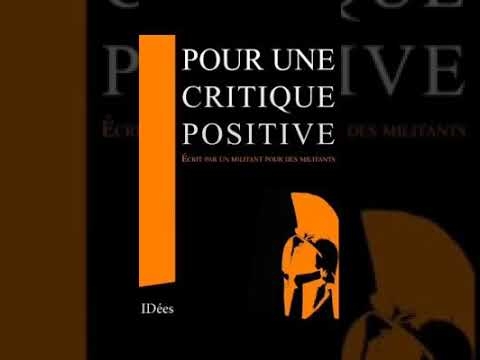
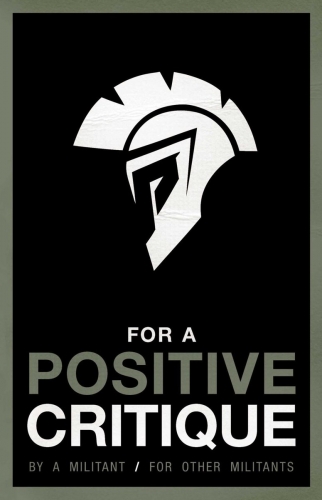


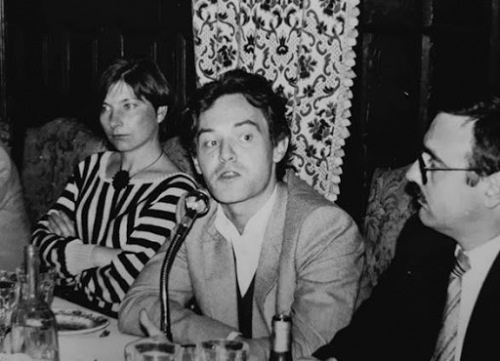
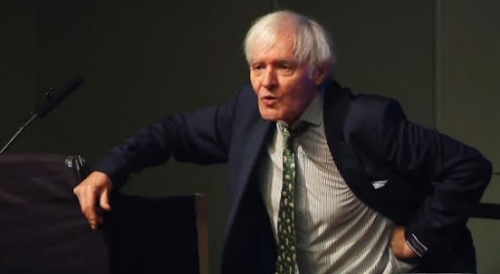

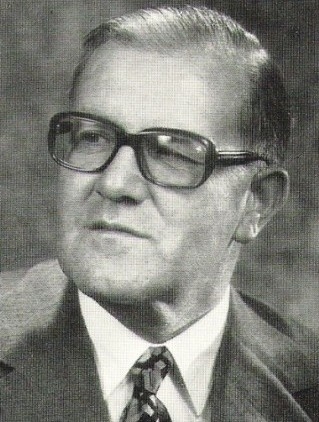

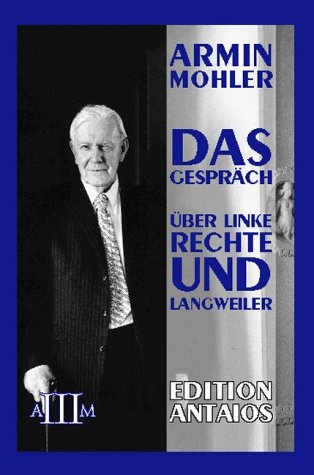

 [* Translator’s note. Transl. Gregory Fried and Richard Polt (Yale, 2000), with some pedantic syntactical amendments by me. Faye’s French rendition differs a little: “‘Cette Europe qui, dans un incalculable aveuglement, se trouve toujours sur le point de se poignarder elle-même,’ écrit Martin Heidegger dans son Introduction à la métaphysique, ‘est prise aujourd’hui dans un étau entre la Russie d'une part et l’Amérique de l’autre. La Russie et l’Amérique sont, toutes deux, au point de vue métaphysique la même chose: la même frénésie de l’organisation sans racine de l’homme normalisé. Lorsque le dernier petit coin du globe terrestre est devenu exploitable économiquement […] et que le temps comme provenance a disparu de l’être-là de tous les peuples, alors la question: “Pour quel but? Où allons nous? et quoi ensuite?” est toujours présente et, à la façon d’un spectre, traverse toute cette sorcellerie.’”]
[* Translator’s note. Transl. Gregory Fried and Richard Polt (Yale, 2000), with some pedantic syntactical amendments by me. Faye’s French rendition differs a little: “‘Cette Europe qui, dans un incalculable aveuglement, se trouve toujours sur le point de se poignarder elle-même,’ écrit Martin Heidegger dans son Introduction à la métaphysique, ‘est prise aujourd’hui dans un étau entre la Russie d'une part et l’Amérique de l’autre. La Russie et l’Amérique sont, toutes deux, au point de vue métaphysique la même chose: la même frénésie de l’organisation sans racine de l’homme normalisé. Lorsque le dernier petit coin du globe terrestre est devenu exploitable économiquement […] et que le temps comme provenance a disparu de l’être-là de tous les peuples, alors la question: “Pour quel but? Où allons nous? et quoi ensuite?” est toujours présente et, à la façon d’un spectre, traverse toute cette sorcellerie.’”]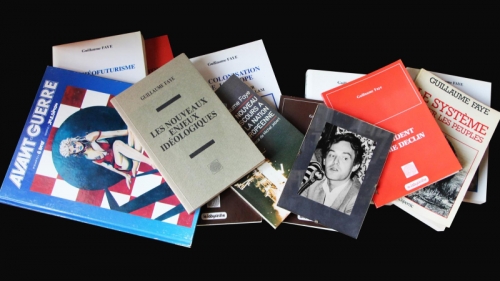
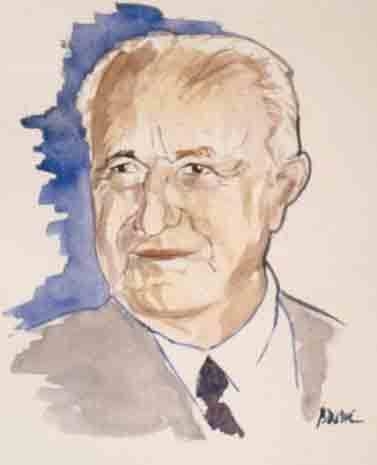 It’s the very idea of Third-World economic development that we ought, in fact, to suspect. This notion presupposes in effect that the peoples of the Third World ought necessarily to follow the path of Western industrialisation. Now this accords singularly well with the liberal desire for international division of labour and economic specialisation of zones, indispensable for the modern capitalism of planetary free exchange. And who, under doctrinal and humanitarian camouflage (the “right to development”) thus advocates Third-World industrialisation? Those who defend the interests of an economic system in which the growth of global industrial commerce is as necessary as warm water for mackerel shoals.* Again and again, François Perroux has shown that the “overall quality of life” in “developing” countries that are considered already nearly developed, was lower than that achieved by traditional societies. Inversely, poorer countries, or less industrialised zones, know a real “quality of life” superior to what OECD figures might have one believe.** And until today, the United States have been the only real beneficiaries of the industrialisation of Asia, Africa and South America.
It’s the very idea of Third-World economic development that we ought, in fact, to suspect. This notion presupposes in effect that the peoples of the Third World ought necessarily to follow the path of Western industrialisation. Now this accords singularly well with the liberal desire for international division of labour and economic specialisation of zones, indispensable for the modern capitalism of planetary free exchange. And who, under doctrinal and humanitarian camouflage (the “right to development”) thus advocates Third-World industrialisation? Those who defend the interests of an economic system in which the growth of global industrial commerce is as necessary as warm water for mackerel shoals.* Again and again, François Perroux has shown that the “overall quality of life” in “developing” countries that are considered already nearly developed, was lower than that achieved by traditional societies. Inversely, poorer countries, or less industrialised zones, know a real “quality of life” superior to what OECD figures might have one believe.** And until today, the United States have been the only real beneficiaries of the industrialisation of Asia, Africa and South America.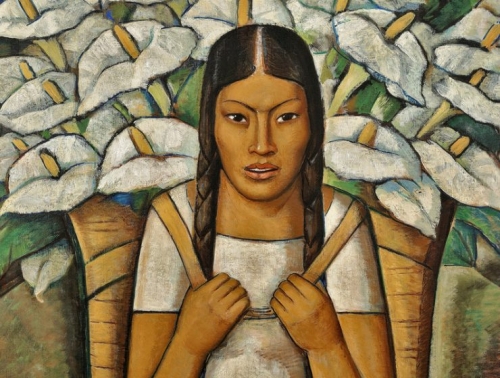
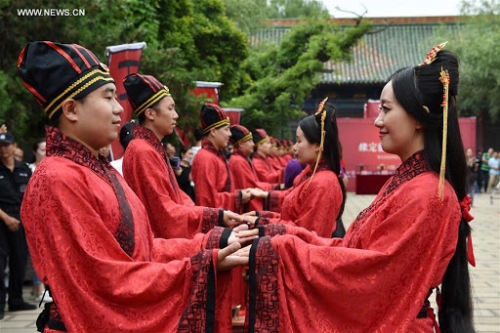
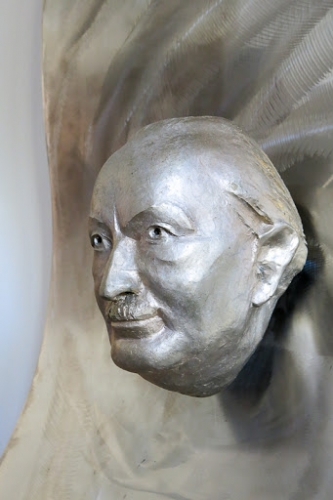
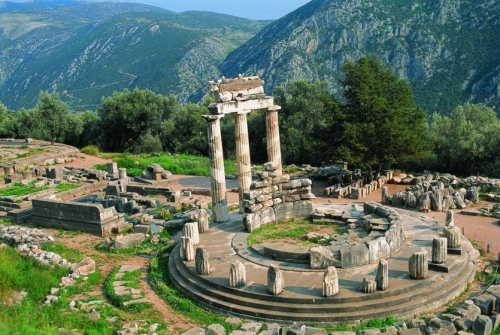
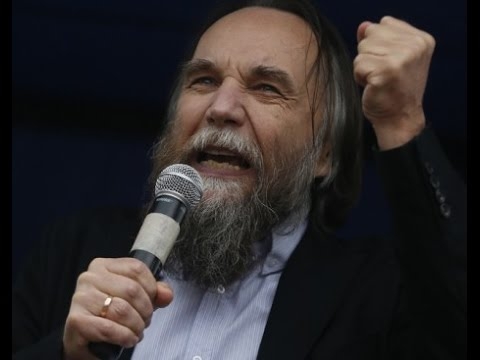

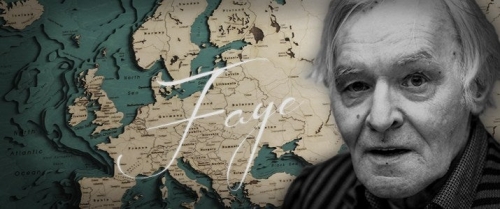

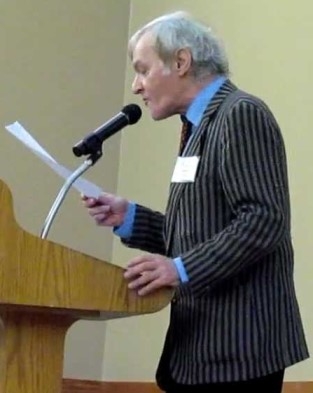 Tiene un tufillo a “nueva derecha” francesa, claro, porque el autor ha pertenecido a tal grupo, aunque termine renegando de tal movimiento. Más reniega aún de la izquierda, a la que considera impotente para hacer frente al capitalismo y acusa de convertirse en una clase aburguesada que no defiende a los más necesitados, sino a una clase media trabajadora asalariada y una serie de valores igualitarios (feminismo, inmigrantes, homosexuales,…) que nos llevan al desastre. Aunque con aires políticos más que filosóficos, veo en Faye un digno heredero del martillo nietzscheano. Se dan los mismos elementos que ya supieron ver Nietzsche o Spengler o los pensadores clásicos que no caminaron con una venda en los ojos. Políticos y filósofos tratan sobre ideas sociales, pero los primeros poco saben de pensar y sí mucho de demagogia; los políticos hablan para su tiempo, los filósofos se preocupan de temas perennes. En ese sentido, bueno es que algunos pensadores políticos se acerquen al pensamiento intempestivo de la filosofía, aunque sea en su estilo, antes que preocuparse por ocupar unos sillones en un congreso.
Tiene un tufillo a “nueva derecha” francesa, claro, porque el autor ha pertenecido a tal grupo, aunque termine renegando de tal movimiento. Más reniega aún de la izquierda, a la que considera impotente para hacer frente al capitalismo y acusa de convertirse en una clase aburguesada que no defiende a los más necesitados, sino a una clase media trabajadora asalariada y una serie de valores igualitarios (feminismo, inmigrantes, homosexuales,…) que nos llevan al desastre. Aunque con aires políticos más que filosóficos, veo en Faye un digno heredero del martillo nietzscheano. Se dan los mismos elementos que ya supieron ver Nietzsche o Spengler o los pensadores clásicos que no caminaron con una venda en los ojos. Políticos y filósofos tratan sobre ideas sociales, pero los primeros poco saben de pensar y sí mucho de demagogia; los políticos hablan para su tiempo, los filósofos se preocupan de temas perennes. En ese sentido, bueno es que algunos pensadores políticos se acerquen al pensamiento intempestivo de la filosofía, aunque sea en su estilo, antes que preocuparse por ocupar unos sillones en un congreso.
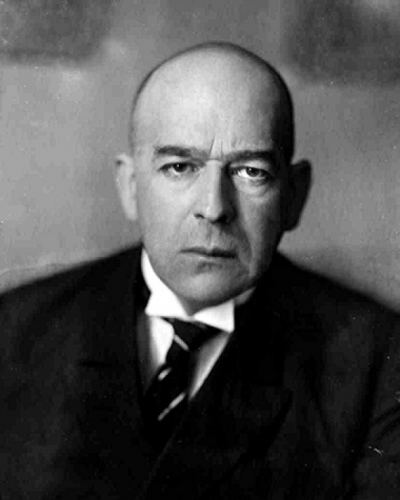
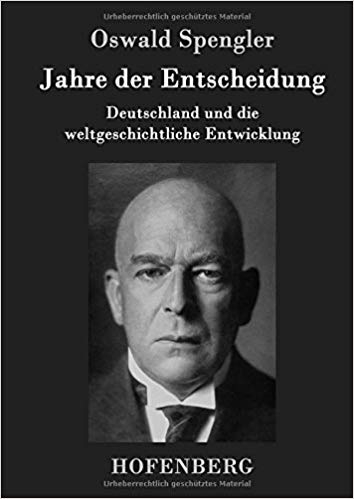 Les faiblesses de l’œuvre de Spengler
Les faiblesses de l’œuvre de Spengler Bien sûr, la vie recluse de Spengler permet de telles suppositions. Il est né le 29 mai 1880, fils d’un haut fonctionnaire des postes, à Blankenburg dans le Harz (2). Ce n’était pas le père, homme paisible, qui dominait la vie familiale mais la mère, une créature à moitié folle, dévorée d’ambitions pseudo-artistiques. Elle remplissait leur grand appartement d’une telle quantité de meubles que le jeune Oswald et ses trois sœurs devaient loger dans des débarras, sous le toit !
Bien sûr, la vie recluse de Spengler permet de telles suppositions. Il est né le 29 mai 1880, fils d’un haut fonctionnaire des postes, à Blankenburg dans le Harz (2). Ce n’était pas le père, homme paisible, qui dominait la vie familiale mais la mère, une créature à moitié folle, dévorée d’ambitions pseudo-artistiques. Elle remplissait leur grand appartement d’une telle quantité de meubles que le jeune Oswald et ses trois sœurs devaient loger dans des débarras, sous le toit ! L’inflexibilité
L’inflexibilité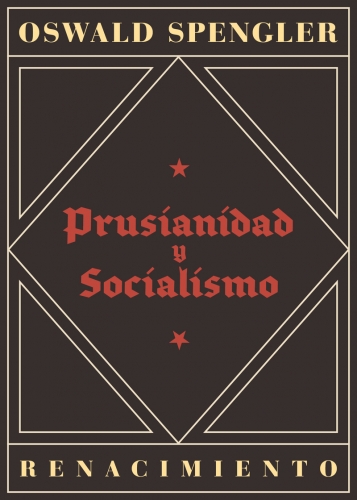 La vie se voit alors réduite à une rationalité moyenne, qui interdit toutes ces grandes effervescences qui entraînent soit vers le haut soit vers le bas ; l’homme se meut alors dans un cadre étroit qui ne lui propose rien de plus que la satisfaction de ses besoins physiques. Au-dessus de ce cadre, souffle un tiède ventelet d’éthique behavioriste.
La vie se voit alors réduite à une rationalité moyenne, qui interdit toutes ces grandes effervescences qui entraînent soit vers le haut soit vers le bas ; l’homme se meut alors dans un cadre étroit qui ne lui propose rien de plus que la satisfaction de ses besoins physiques. Au-dessus de ce cadre, souffle un tiède ventelet d’éthique behavioriste. 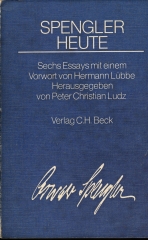 Nous ne saurions achever cette introduction au dossier Spengler sans mentionner un ouvrage récent et remarquablement bien fait sur sa pensée. Il s’agit de Spengler heute, Sechs Essays (Spengler aujourd’hui, six essais), préfacé par Hermann Lübbe, sous la direction de Peter Christian Ludz. Cet ouvrage est paru aux éditions CH Beck de Munich. Il comprend des textes de Hermann Lübbe (Historisch-politische Exaltationen : Spengler wiedergelesen = Exaltations historico-politiques : Une relecture de S.), d’Alexander Demandt (Spengler und die Spätantike = Spengler et la Haute-Antiquité), de Horst Möller (Oswald Spengler : Geschichte im Dienste der Zeitkritik = O.S. : L’Histoire au service de la critique du temps), de Tracy B. Strong (O.S. : Ontologie, Kritik und Enttäuschung = S. : Ontologie, critique et déception), du spécialiste français Gilbert Merlio (S. und die Technik = S. et la technique) et de G.L. Ulmen (Metaphysik des Morgenlandes - S. über Russland = Métaphysique de l’Orient, S. et la Russie). La lecture de cet ouvrage est indispensable pour pouvoir comprendre et utiliser Spengler aujourd’hui.
Nous ne saurions achever cette introduction au dossier Spengler sans mentionner un ouvrage récent et remarquablement bien fait sur sa pensée. Il s’agit de Spengler heute, Sechs Essays (Spengler aujourd’hui, six essais), préfacé par Hermann Lübbe, sous la direction de Peter Christian Ludz. Cet ouvrage est paru aux éditions CH Beck de Munich. Il comprend des textes de Hermann Lübbe (Historisch-politische Exaltationen : Spengler wiedergelesen = Exaltations historico-politiques : Une relecture de S.), d’Alexander Demandt (Spengler und die Spätantike = Spengler et la Haute-Antiquité), de Horst Möller (Oswald Spengler : Geschichte im Dienste der Zeitkritik = O.S. : L’Histoire au service de la critique du temps), de Tracy B. Strong (O.S. : Ontologie, Kritik und Enttäuschung = S. : Ontologie, critique et déception), du spécialiste français Gilbert Merlio (S. und die Technik = S. et la technique) et de G.L. Ulmen (Metaphysik des Morgenlandes - S. über Russland = Métaphysique de l’Orient, S. et la Russie). La lecture de cet ouvrage est indispensable pour pouvoir comprendre et utiliser Spengler aujourd’hui.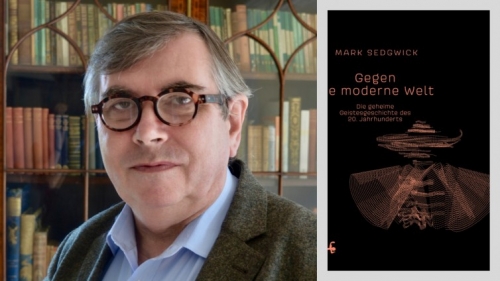
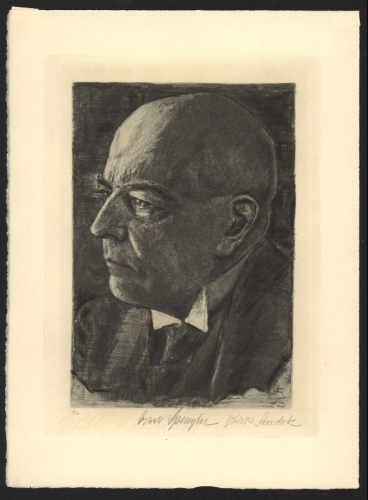
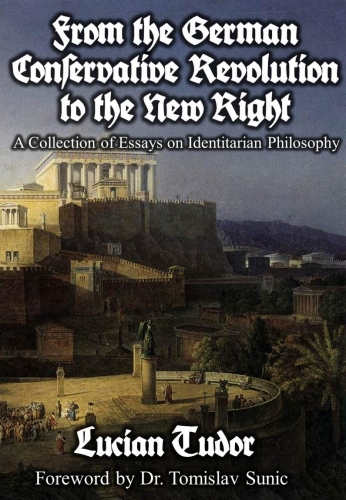
 The most radical contradiction with Spengler made by Moeller van den Bruck was the rejection of Spengler’s cultural morphology, since Moeller believed that Germany could not even be classified as part of the “West,” but rather that it represented a distinct culture in its own right, one which even had more in common in spirit with Russia than with the “West,” and which was destined to rise while France and England fell.[10] However, we must note here that the notion that Germany is non-Western was not unique to Moeller, for Werner Sombart, Edgar Julius Jung, and Othmar Spann have all argued that Germans belonged to a very different cultural type from that of the Western nations, especially from the culture of the Anglo-Saxon world. For these authors, Germany represented a culture which was more oriented towards community, spirituality, and heroism, while the modern “West” was more oriented towards individualism, materialism, and capitalistic ethics. They further argued that any presence of Western characteristics in modern Germany was due to a recent poisoning of German culture by the West which the German people had a duty to overcome through sociocultural revolution.[11]
The most radical contradiction with Spengler made by Moeller van den Bruck was the rejection of Spengler’s cultural morphology, since Moeller believed that Germany could not even be classified as part of the “West,” but rather that it represented a distinct culture in its own right, one which even had more in common in spirit with Russia than with the “West,” and which was destined to rise while France and England fell.[10] However, we must note here that the notion that Germany is non-Western was not unique to Moeller, for Werner Sombart, Edgar Julius Jung, and Othmar Spann have all argued that Germans belonged to a very different cultural type from that of the Western nations, especially from the culture of the Anglo-Saxon world. For these authors, Germany represented a culture which was more oriented towards community, spirituality, and heroism, while the modern “West” was more oriented towards individualism, materialism, and capitalistic ethics. They further argued that any presence of Western characteristics in modern Germany was due to a recent poisoning of German culture by the West which the German people had a duty to overcome through sociocultural revolution.[11]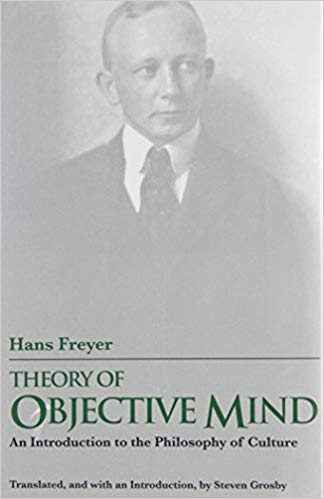 However, Freyer argued that the idea of historical (cultural) types and that cultures were the product of an essence which grew over time were already expressed in different forms long before Spengler in the works of Karl Lamprecht, Wilhelm Dilthey, and Hegel. It is also noteworthy that Freyer’s own sociology of cultural categories differed from Spengler’s morphology. In his earlier works, Freyer focused primarily on the nature of the cultures of particular peoples (Völker) rather than the broad High Cultures, whereas in his later works he stressed the interrelatedness of all the various European cultures across the millennia. Rejecting Spengler’s notion of cultures as being incommensurable, Freyer’s “history regarded modern Europe as composed of ‘layers’ of culture from the past, and Freyer was at pains to show that major historical cultures had grown by drawing upon the legacy of past cultures.”[14] Finally, rejecting Spengler’s historical determinism, Freyer had “warned his readers not to be ensnared by the powerful organic metaphors of the book [Der Untergang des Abendlandes] … The demands of the present and of the future could not be ‘deduced’ from insights into the patterns of culture … but were ultimately based on ‘the wager of action’ (das Wagnis der Tat).”[15]
However, Freyer argued that the idea of historical (cultural) types and that cultures were the product of an essence which grew over time were already expressed in different forms long before Spengler in the works of Karl Lamprecht, Wilhelm Dilthey, and Hegel. It is also noteworthy that Freyer’s own sociology of cultural categories differed from Spengler’s morphology. In his earlier works, Freyer focused primarily on the nature of the cultures of particular peoples (Völker) rather than the broad High Cultures, whereas in his later works he stressed the interrelatedness of all the various European cultures across the millennia. Rejecting Spengler’s notion of cultures as being incommensurable, Freyer’s “history regarded modern Europe as composed of ‘layers’ of culture from the past, and Freyer was at pains to show that major historical cultures had grown by drawing upon the legacy of past cultures.”[14] Finally, rejecting Spengler’s historical determinism, Freyer had “warned his readers not to be ensnared by the powerful organic metaphors of the book [Der Untergang des Abendlandes] … The demands of the present and of the future could not be ‘deduced’ from insights into the patterns of culture … but were ultimately based on ‘the wager of action’ (das Wagnis der Tat).”[15] Like their Revolutionary Conservative precursors, New Rightists reject any fatalist and determinist notion of history, and do not believe that any people is doomed to inevitable decline; “Decadence is therefore not an inescapable phenomenon, as Spengler wrongly thought,” wrote Pierre Krebs, echoing the thoughts of other authors.[23] While the New Rightists accept Spengler’s idea of Western decline, they have posed Europe and the West as two antagonistic entities. According to this new cultural philosophy, the genuine European culture is represented by numerous traditions rooted in the most ancient European cultures, and must be posed as incompatible with the modern “West,” which is the cultural emanation of early modern liberalism, egalitarianism, and individualism.
Like their Revolutionary Conservative precursors, New Rightists reject any fatalist and determinist notion of history, and do not believe that any people is doomed to inevitable decline; “Decadence is therefore not an inescapable phenomenon, as Spengler wrongly thought,” wrote Pierre Krebs, echoing the thoughts of other authors.[23] While the New Rightists accept Spengler’s idea of Western decline, they have posed Europe and the West as two antagonistic entities. According to this new cultural philosophy, the genuine European culture is represented by numerous traditions rooted in the most ancient European cultures, and must be posed as incompatible with the modern “West,” which is the cultural emanation of early modern liberalism, egalitarianism, and individualism.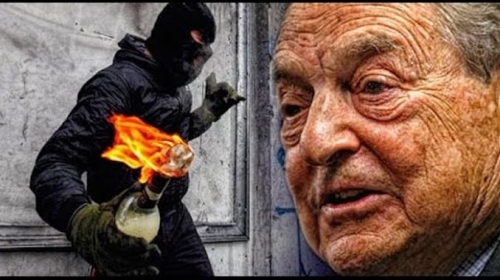


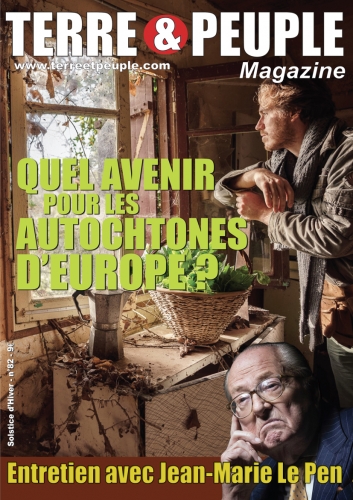
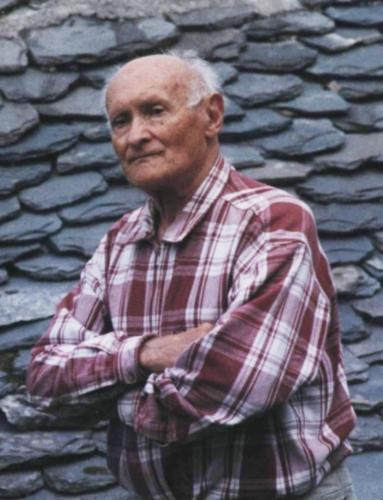

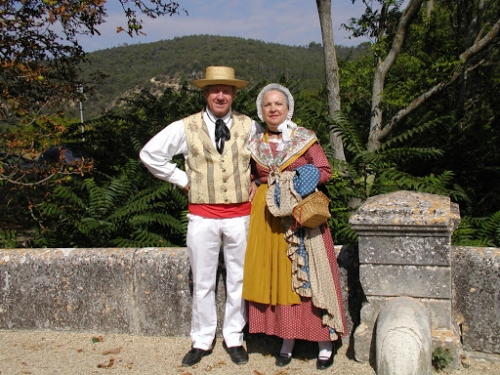




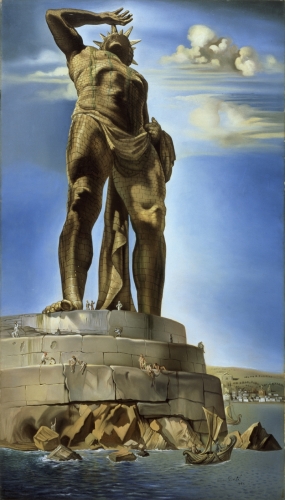

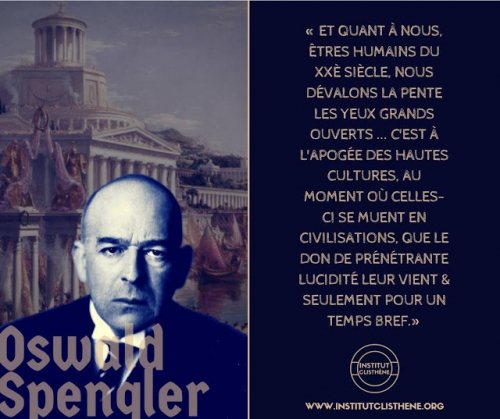
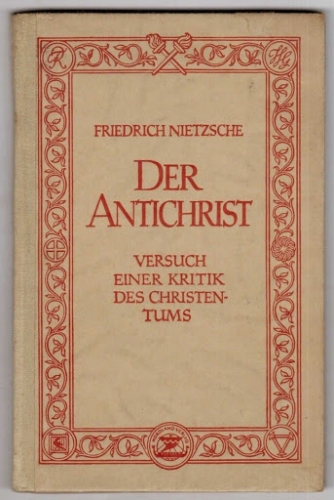 Effectivement. Si « les doux hériteront de la Terre », il n’y a pas de place pour un effort humain vers l’infini, qui atteigne son but, et qui place l’Homme sur le même plan que Dieu. Si la douceur, l’humilité, l’« humble agneau de Dieu » est l’archétype fondateur d’une culture, alors bien sûr l’infini et l’inconnu ne pourront jamais être atteints. « Tu ne connaîtras pas » : il est étonnant de voir tout ce que nous avons réalisé en dépit de cela, et ces remarquables réalisations occidentales sont survenues – pas par hasard – principalement pendant les périodes automnale et hivernale de la Haute Culture faustienne. C’est seulement quand les contraintes imposées par la culture à définition chrétienne se sont dissipées dans une large mesure que l’acceptation a priori de l’échec s’est affaiblie. Le problème est qu’avec une haute Culture décadente et mourante, cette émancipation (partielle) vis-à-vis du culte de l’humilité ne mènera nulle part. Seule une nouvelle Haute Culture bâtie sur le concept fondamental de la transcendance humaine, et sur la conquête de l’infini et de l’inconnu, permettra à l’Homme Occidental d’accomplir son destin. Les ruines croulantes de la Haute Culture précédente peuvent servir de blocs de construction pour le futur, c’est certain, elles peuvent fournir une inspiration, certainement, et être une source de fierté, c’est sûr. Mais nous devons regarder vers le Futur, et non pas monter la garde auprès d’un Passé mourant ou mort, comme le soldat romain de Spengler.
Effectivement. Si « les doux hériteront de la Terre », il n’y a pas de place pour un effort humain vers l’infini, qui atteigne son but, et qui place l’Homme sur le même plan que Dieu. Si la douceur, l’humilité, l’« humble agneau de Dieu » est l’archétype fondateur d’une culture, alors bien sûr l’infini et l’inconnu ne pourront jamais être atteints. « Tu ne connaîtras pas » : il est étonnant de voir tout ce que nous avons réalisé en dépit de cela, et ces remarquables réalisations occidentales sont survenues – pas par hasard – principalement pendant les périodes automnale et hivernale de la Haute Culture faustienne. C’est seulement quand les contraintes imposées par la culture à définition chrétienne se sont dissipées dans une large mesure que l’acceptation a priori de l’échec s’est affaiblie. Le problème est qu’avec une haute Culture décadente et mourante, cette émancipation (partielle) vis-à-vis du culte de l’humilité ne mènera nulle part. Seule une nouvelle Haute Culture bâtie sur le concept fondamental de la transcendance humaine, et sur la conquête de l’infini et de l’inconnu, permettra à l’Homme Occidental d’accomplir son destin. Les ruines croulantes de la Haute Culture précédente peuvent servir de blocs de construction pour le futur, c’est certain, elles peuvent fournir une inspiration, certainement, et être une source de fierté, c’est sûr. Mais nous devons regarder vers le Futur, et non pas monter la garde auprès d’un Passé mourant ou mort, comme le soldat romain de Spengler.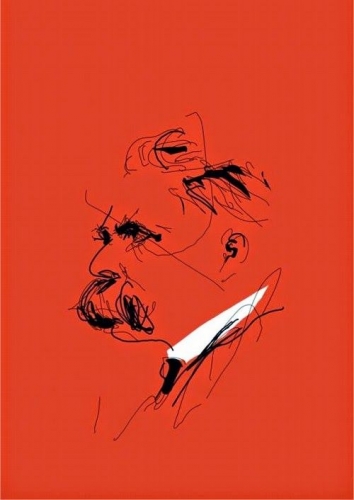
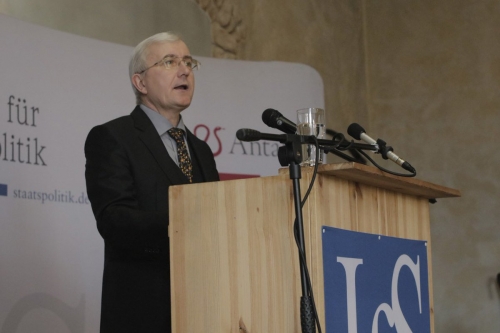
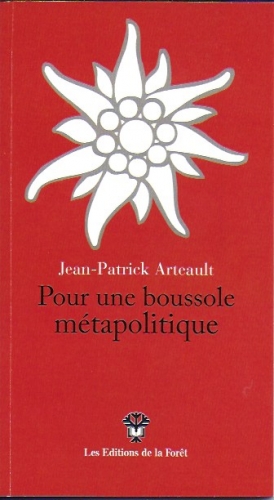
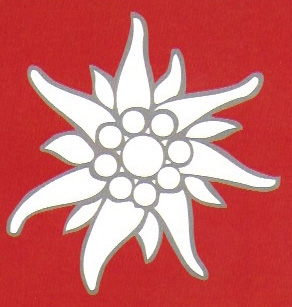 Vous insistez beaucoup, pour l’efficacité de l’action métapolitique, sur la compréhension d’un contexte fait de l’emboîtement de trois éléments : l’Occident, le Système et le Régime. En quelques mots, que voulez-vous dire par là ?
Vous insistez beaucoup, pour l’efficacité de l’action métapolitique, sur la compréhension d’un contexte fait de l’emboîtement de trois éléments : l’Occident, le Système et le Régime. En quelques mots, que voulez-vous dire par là ?